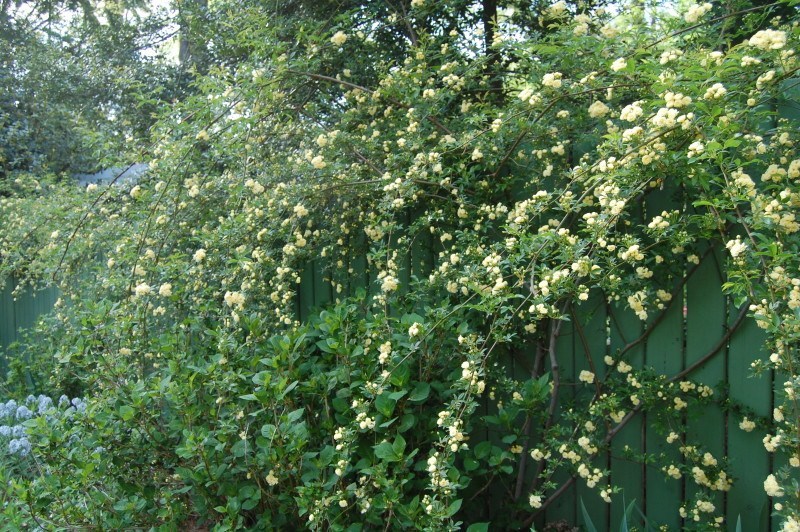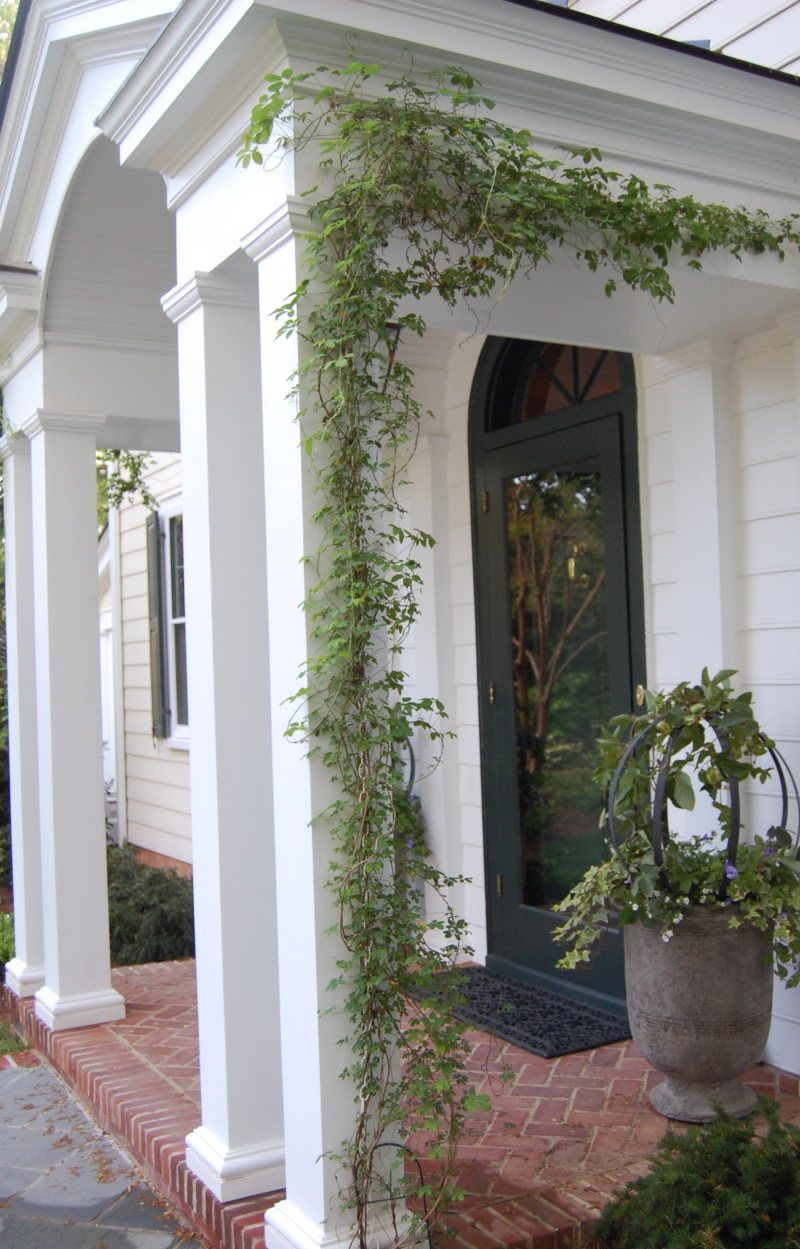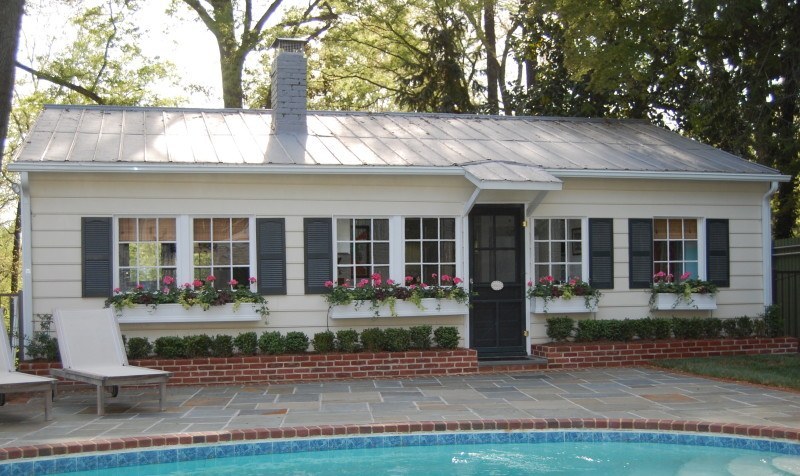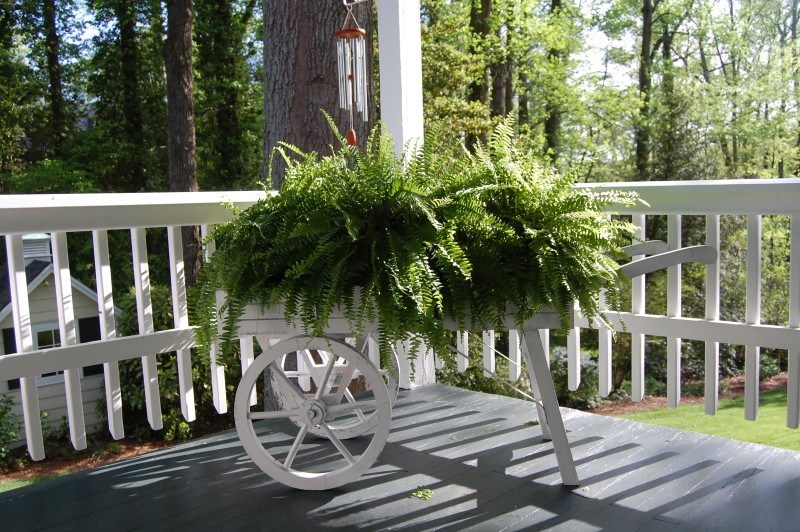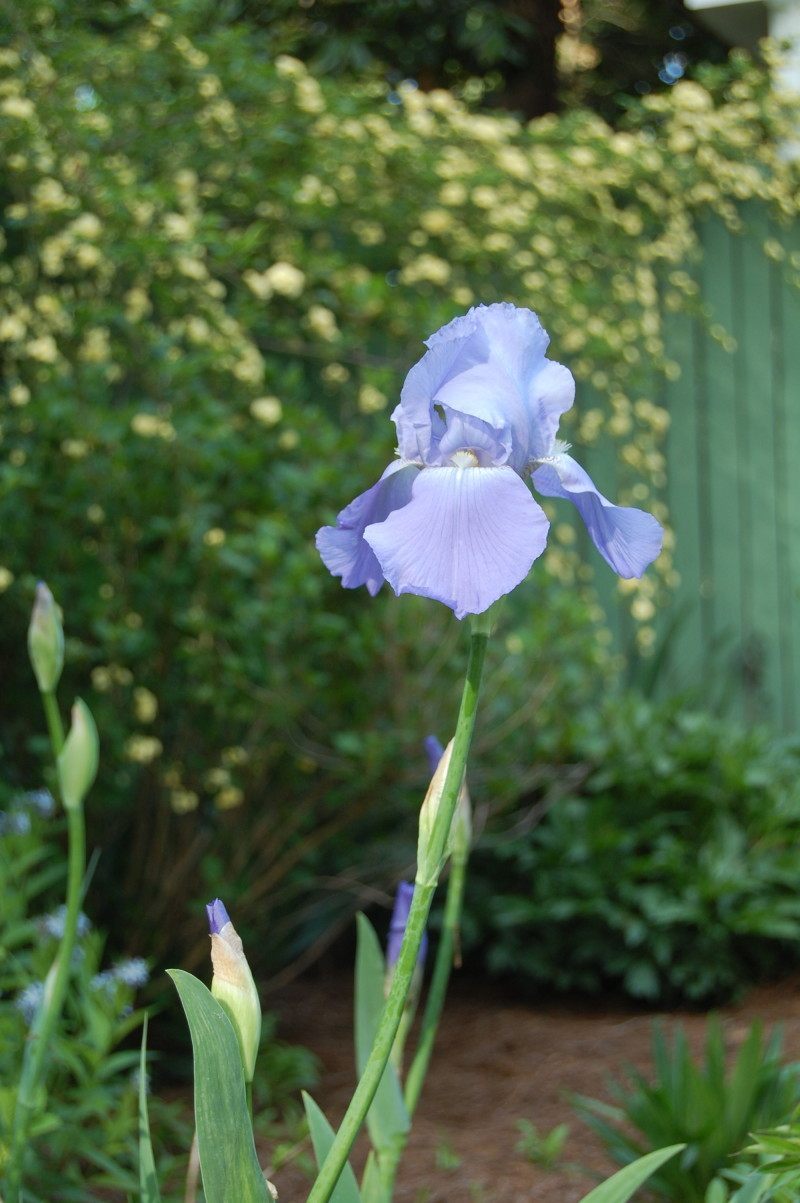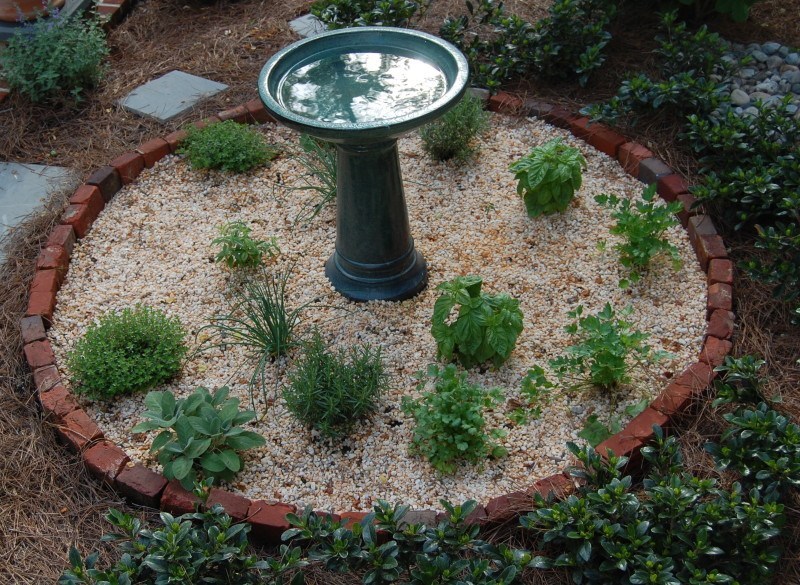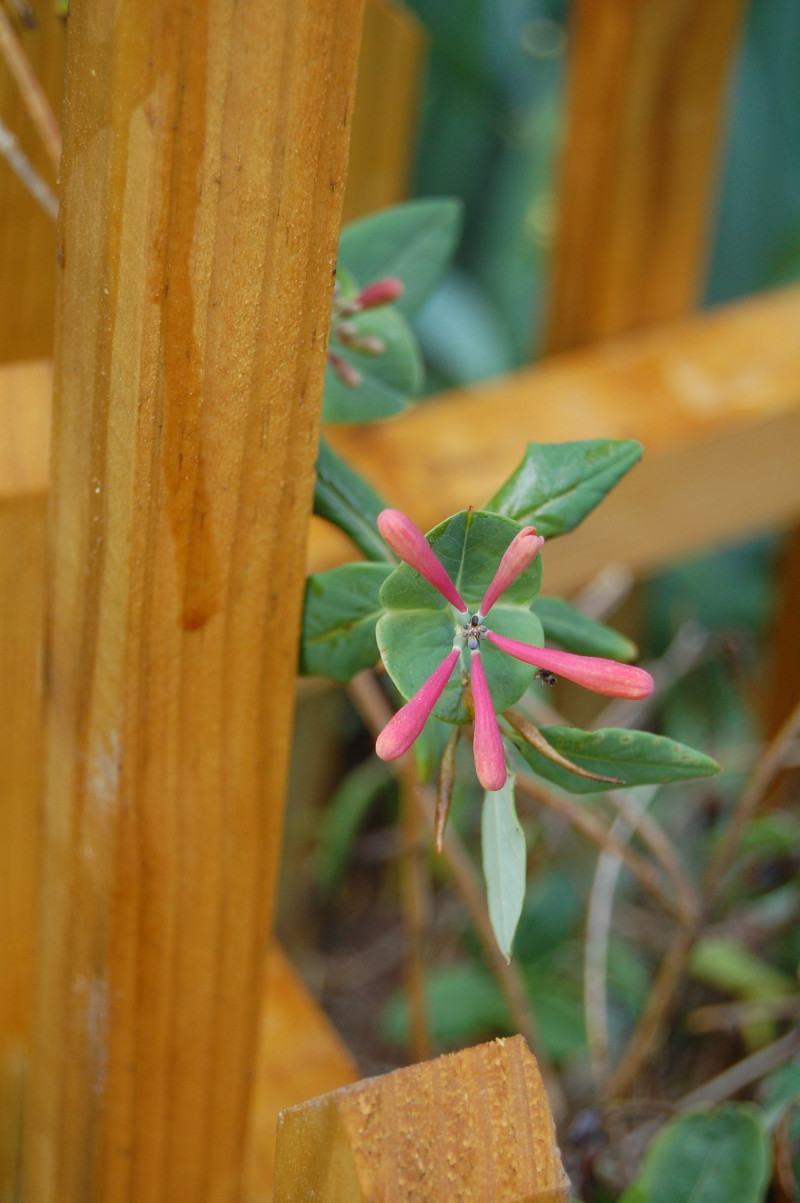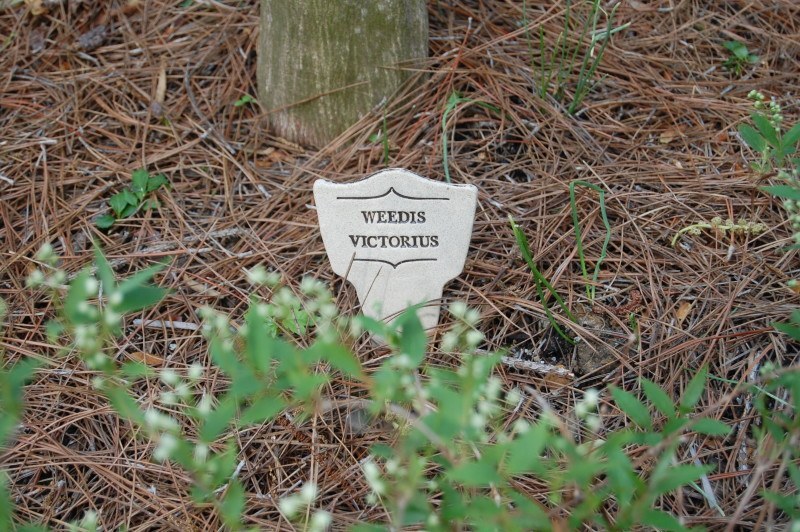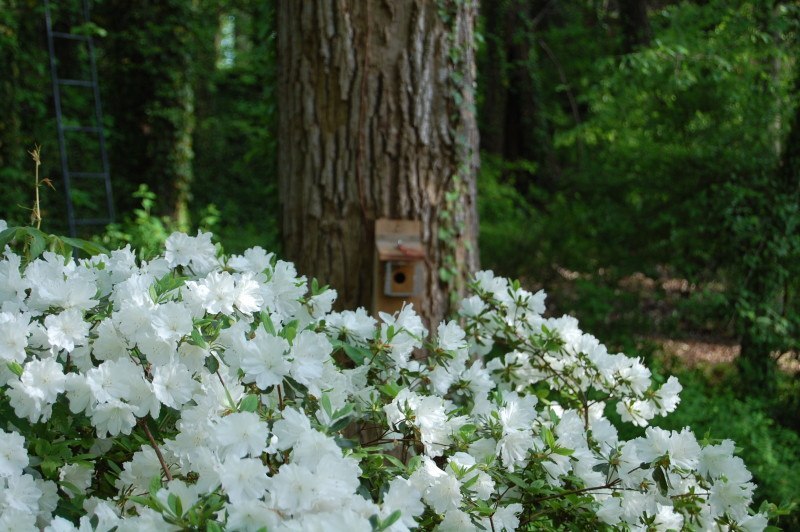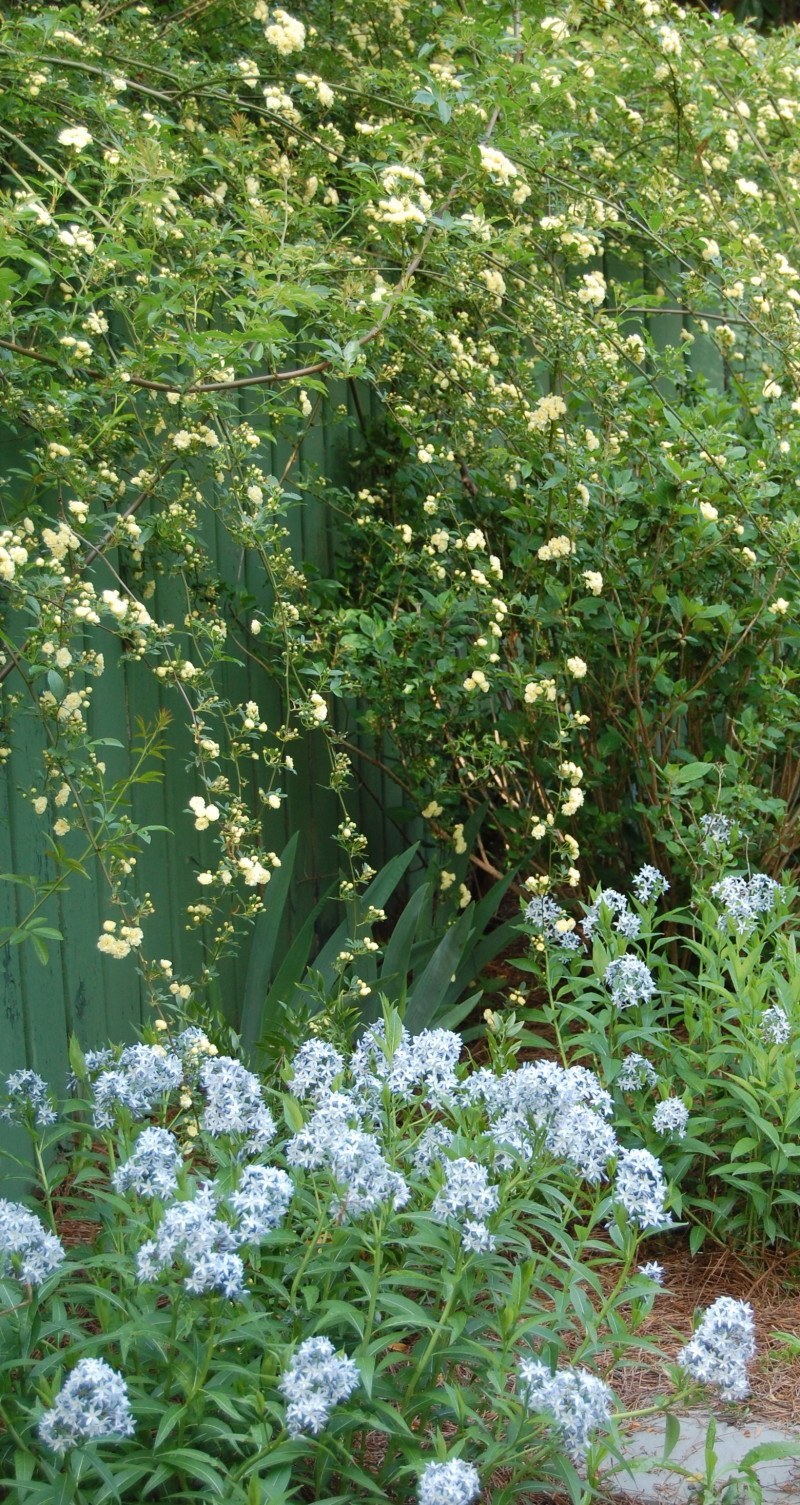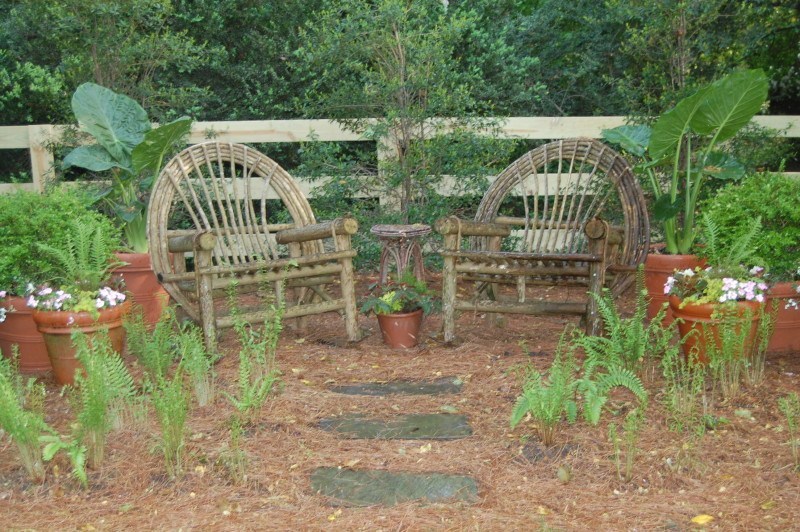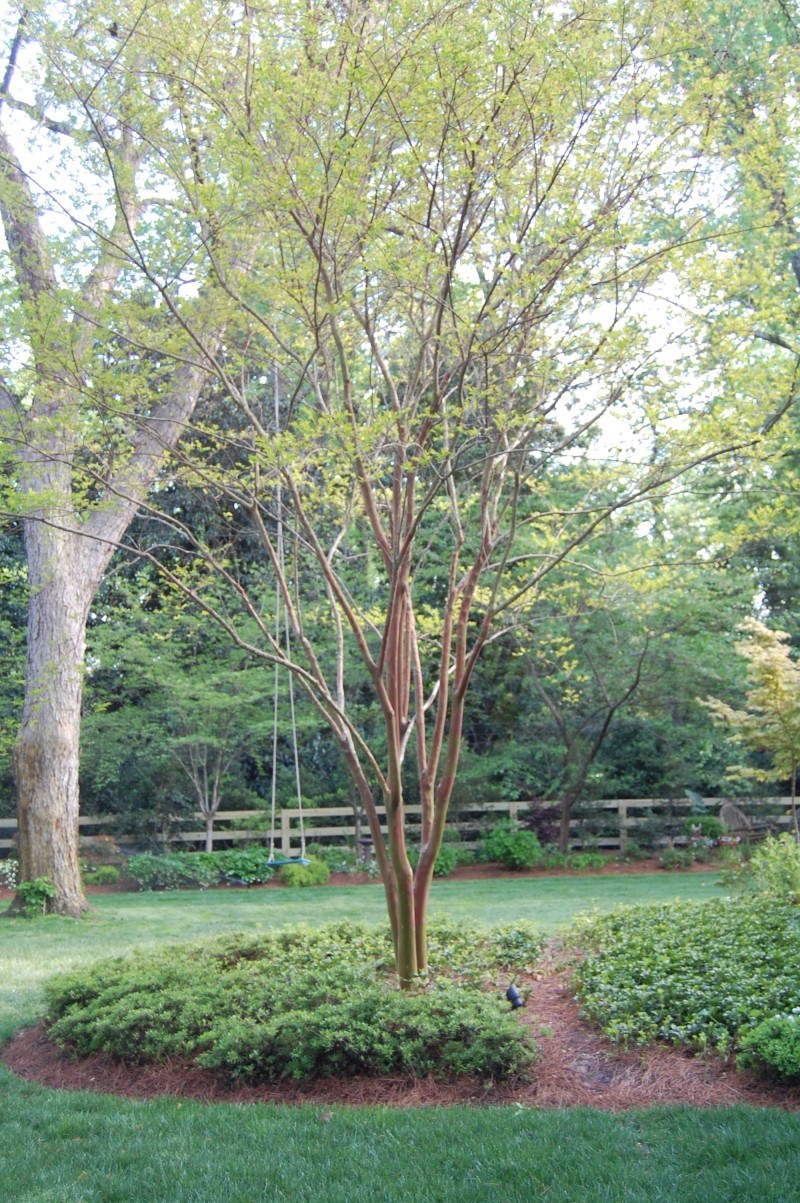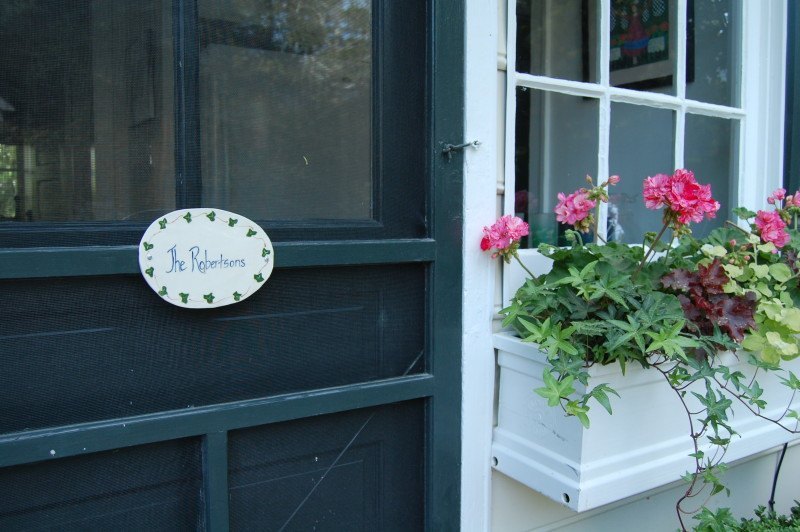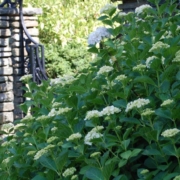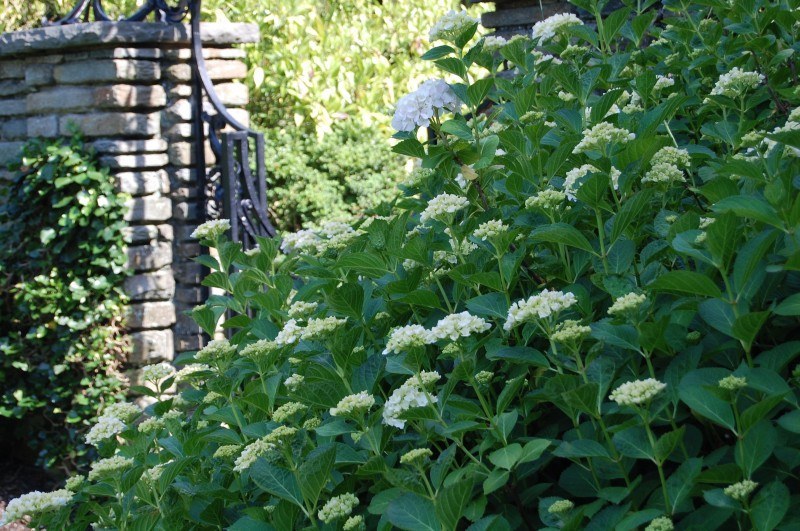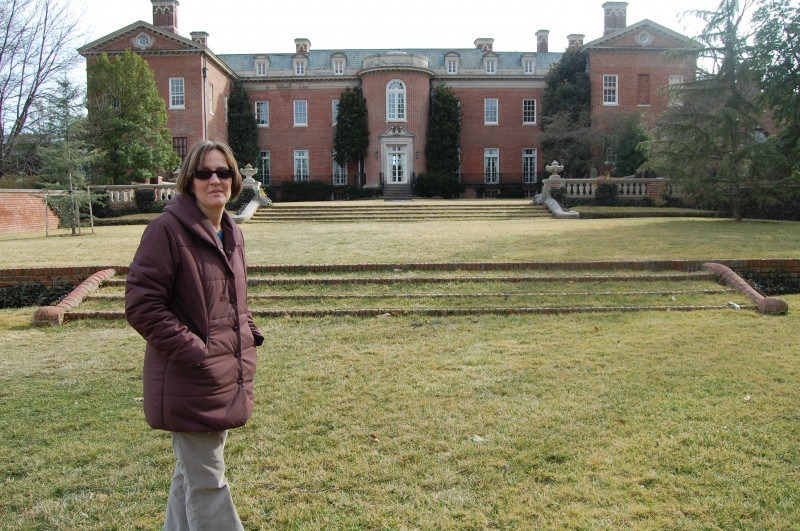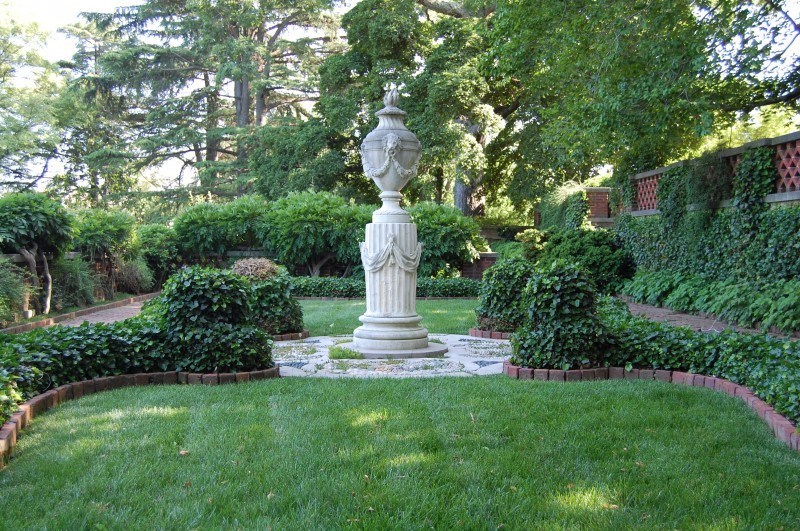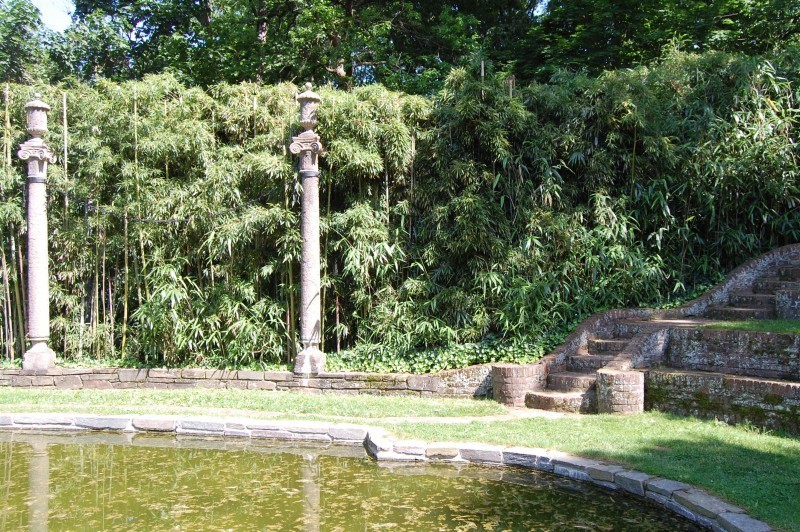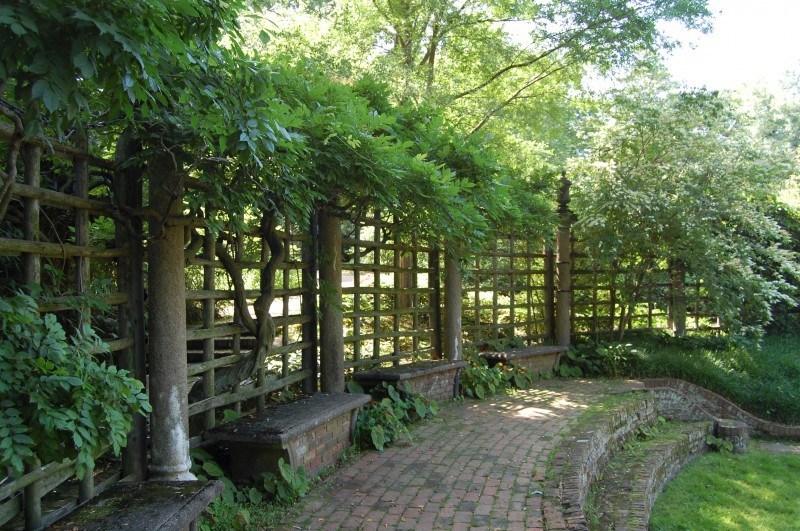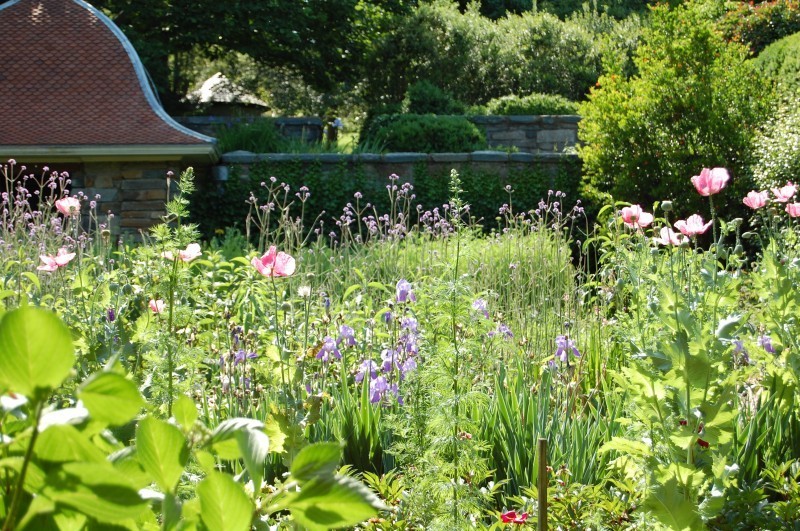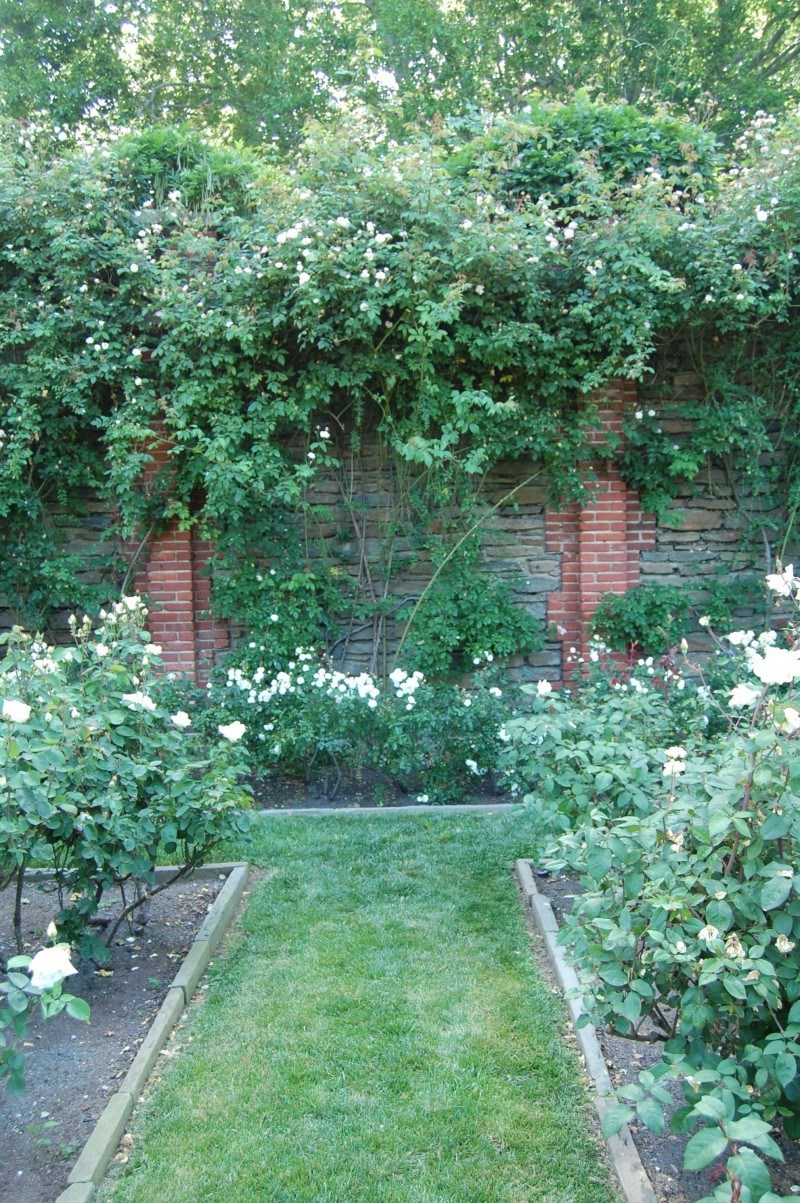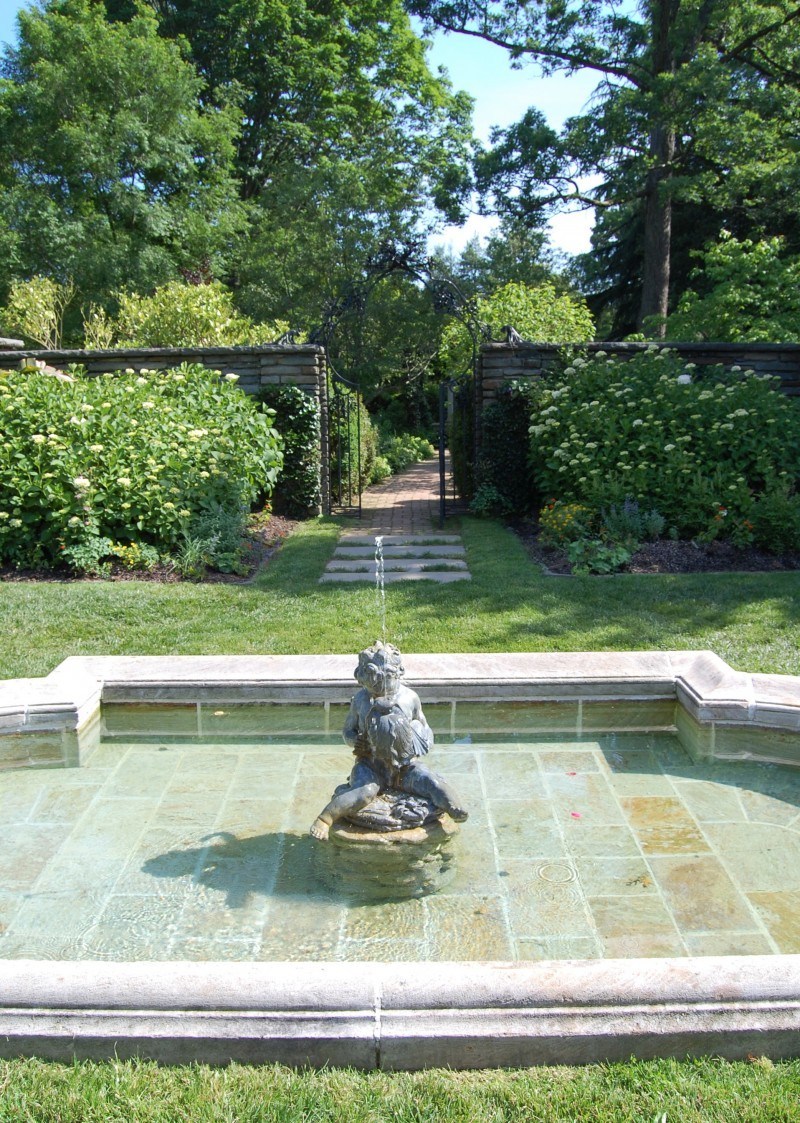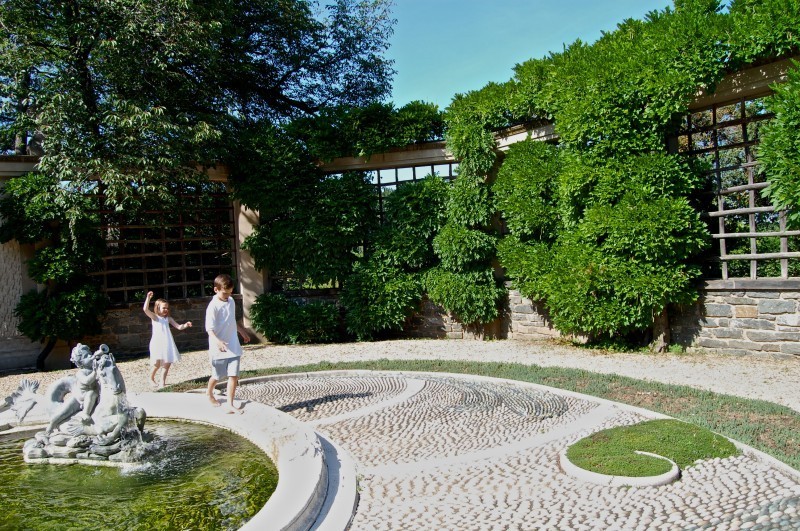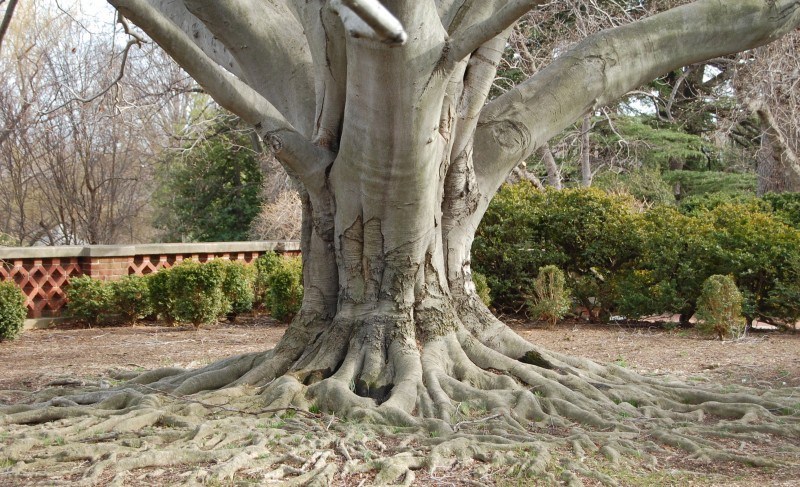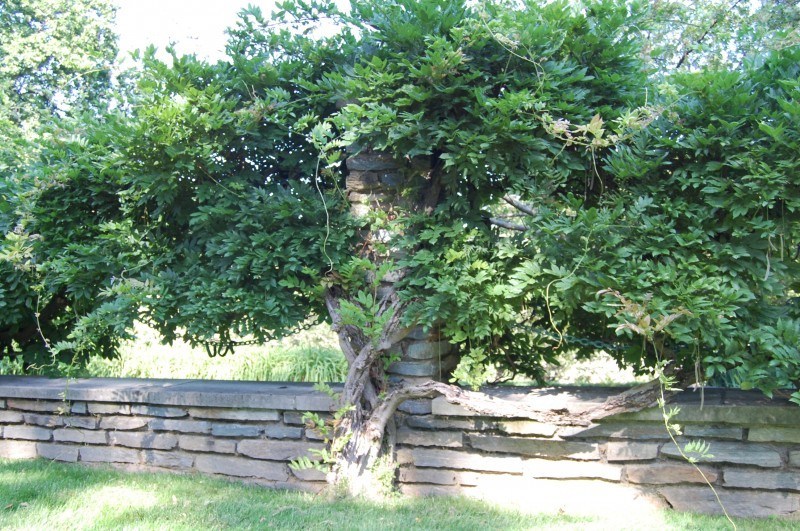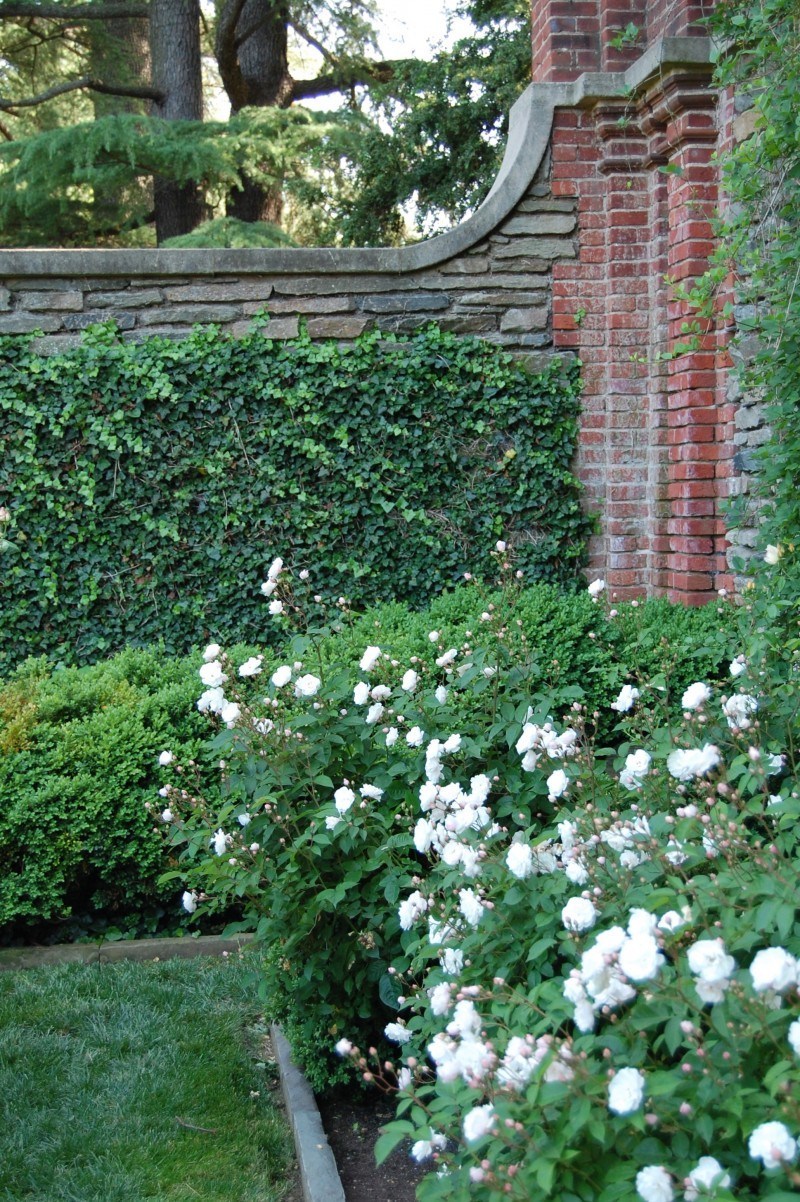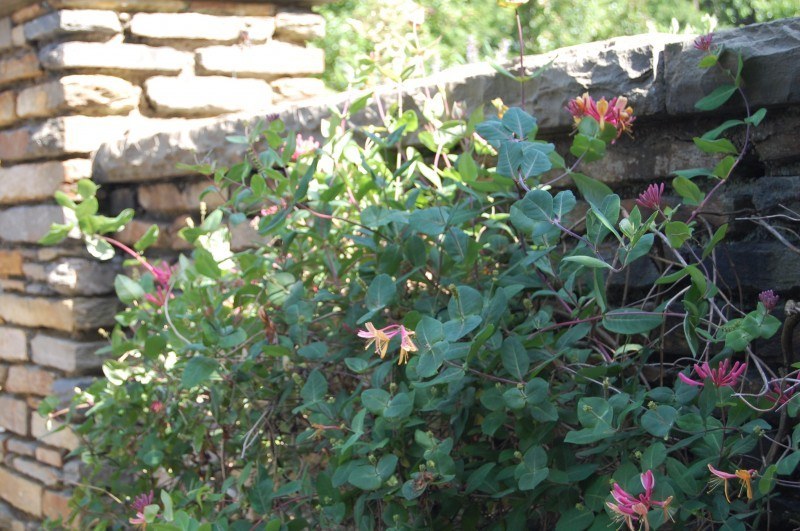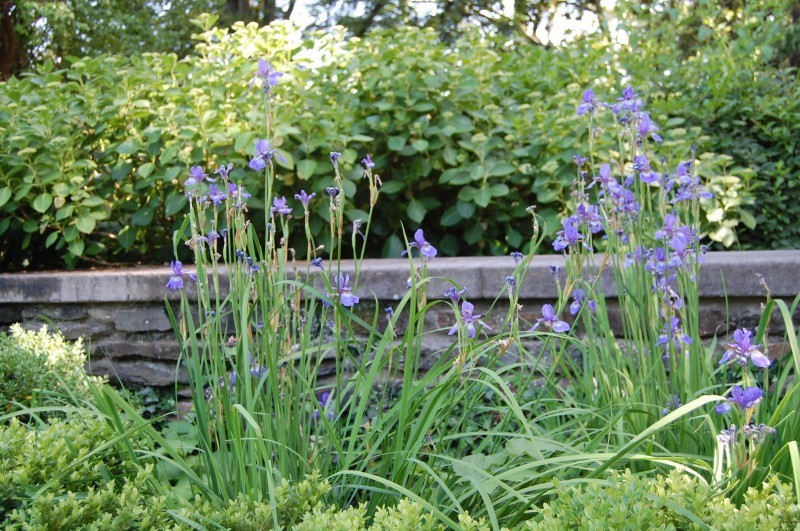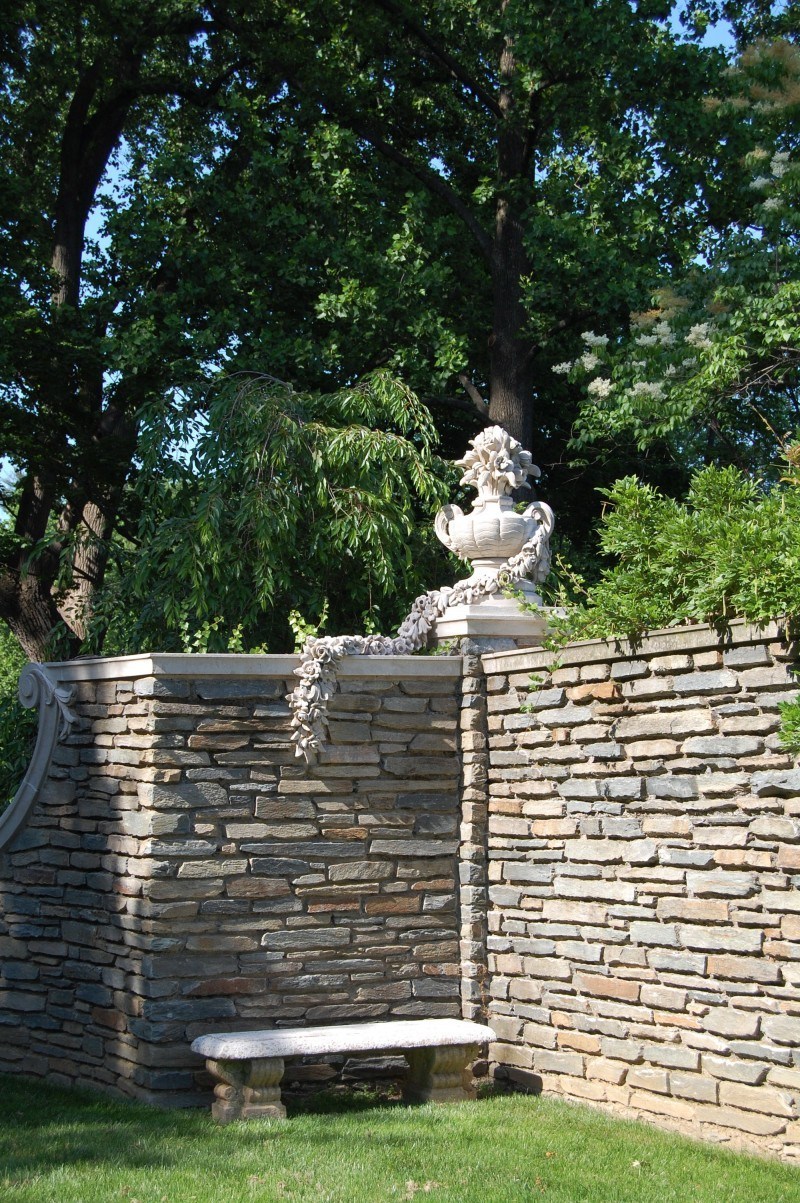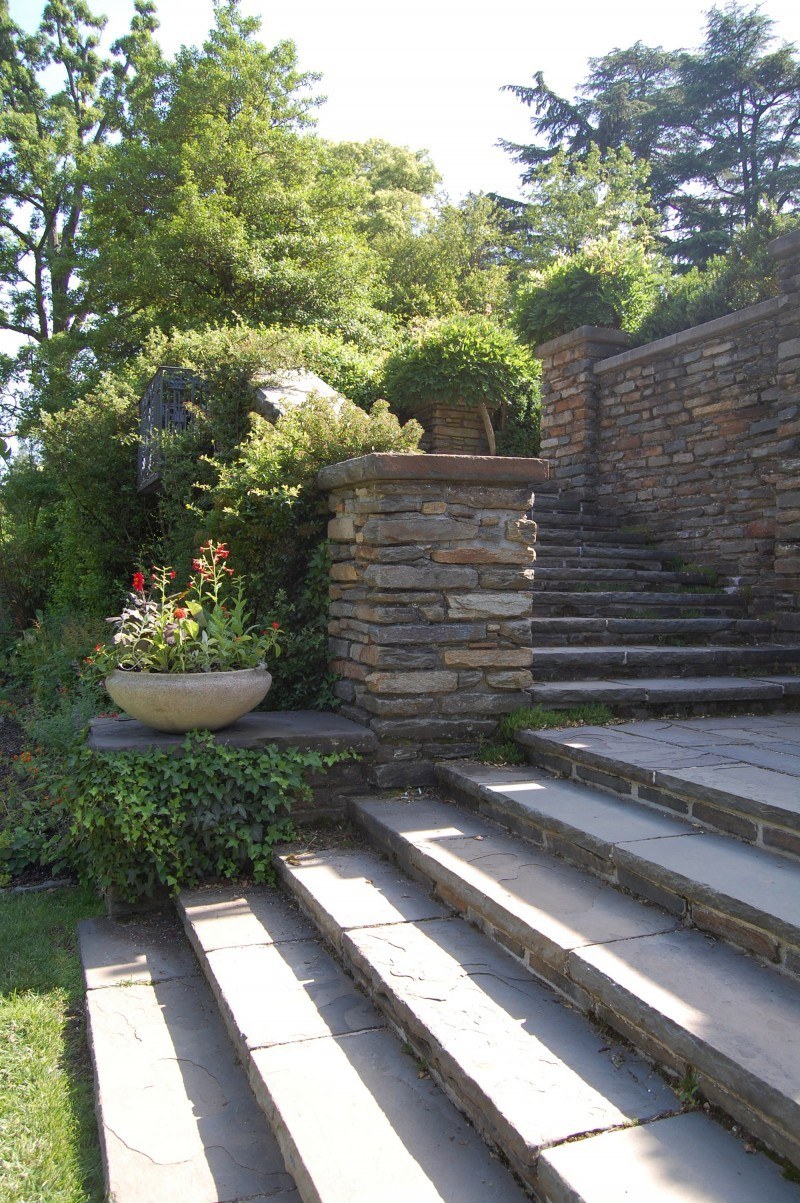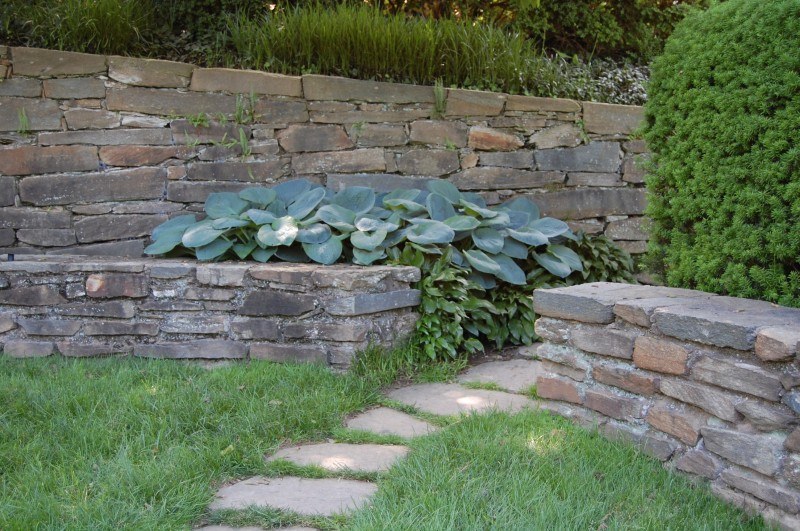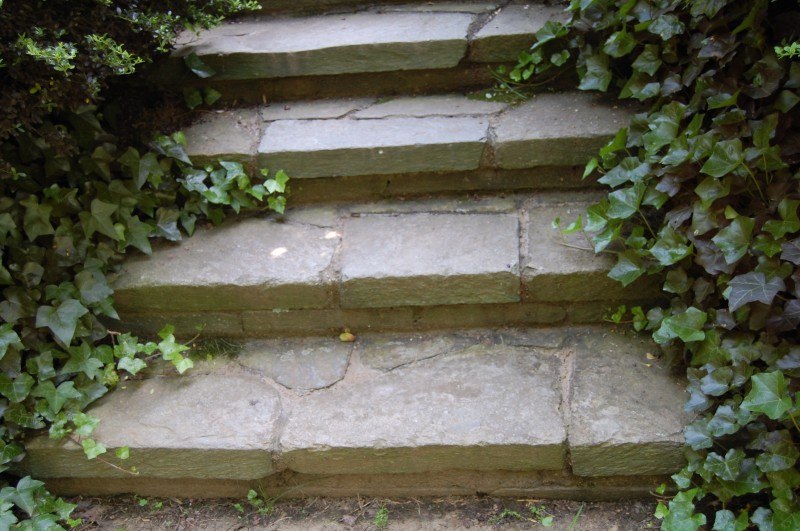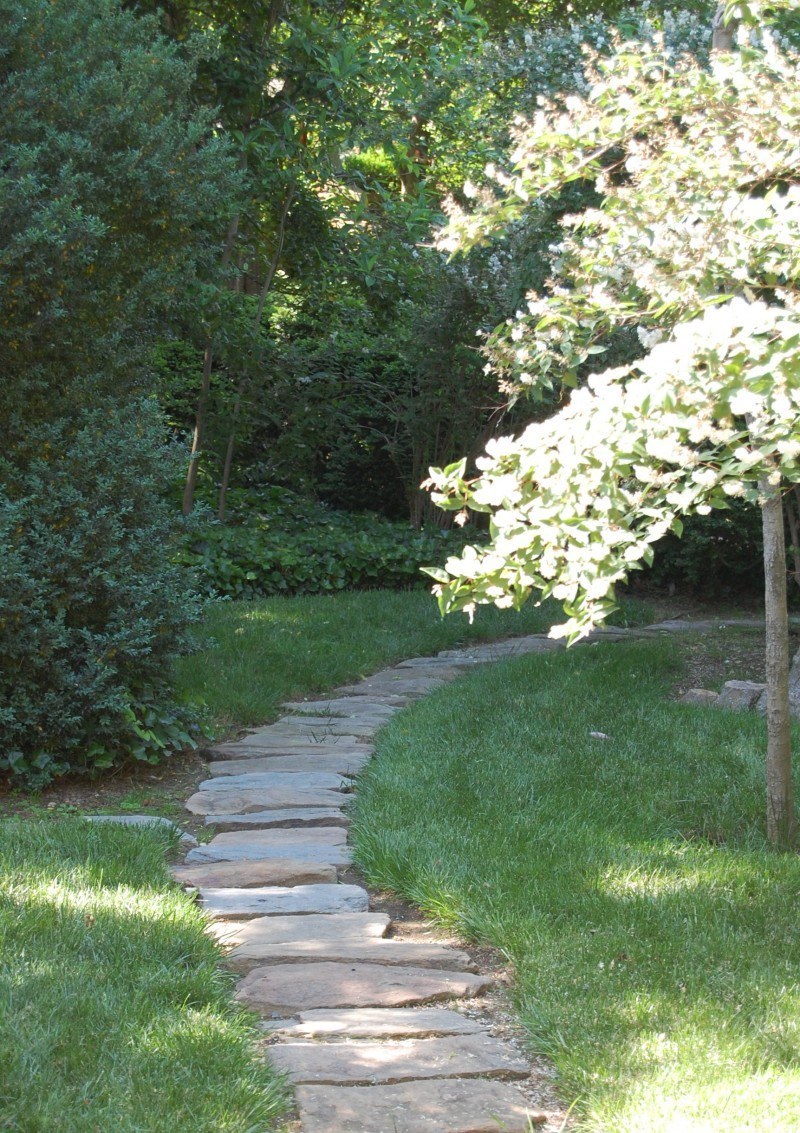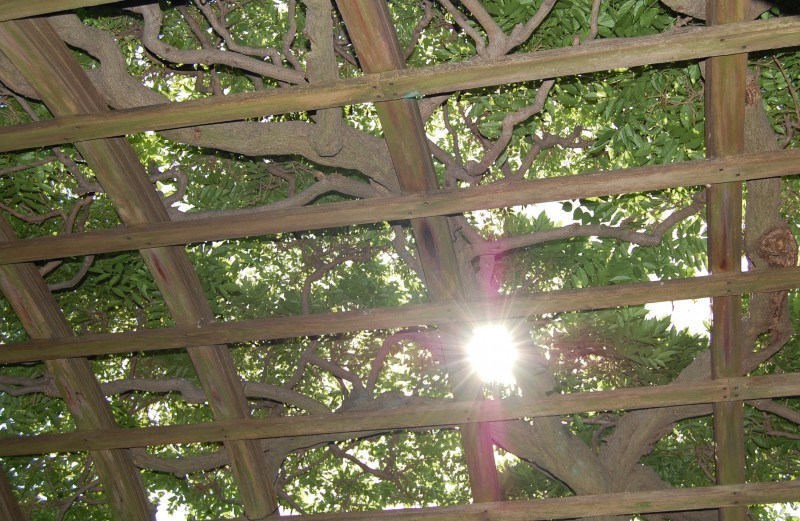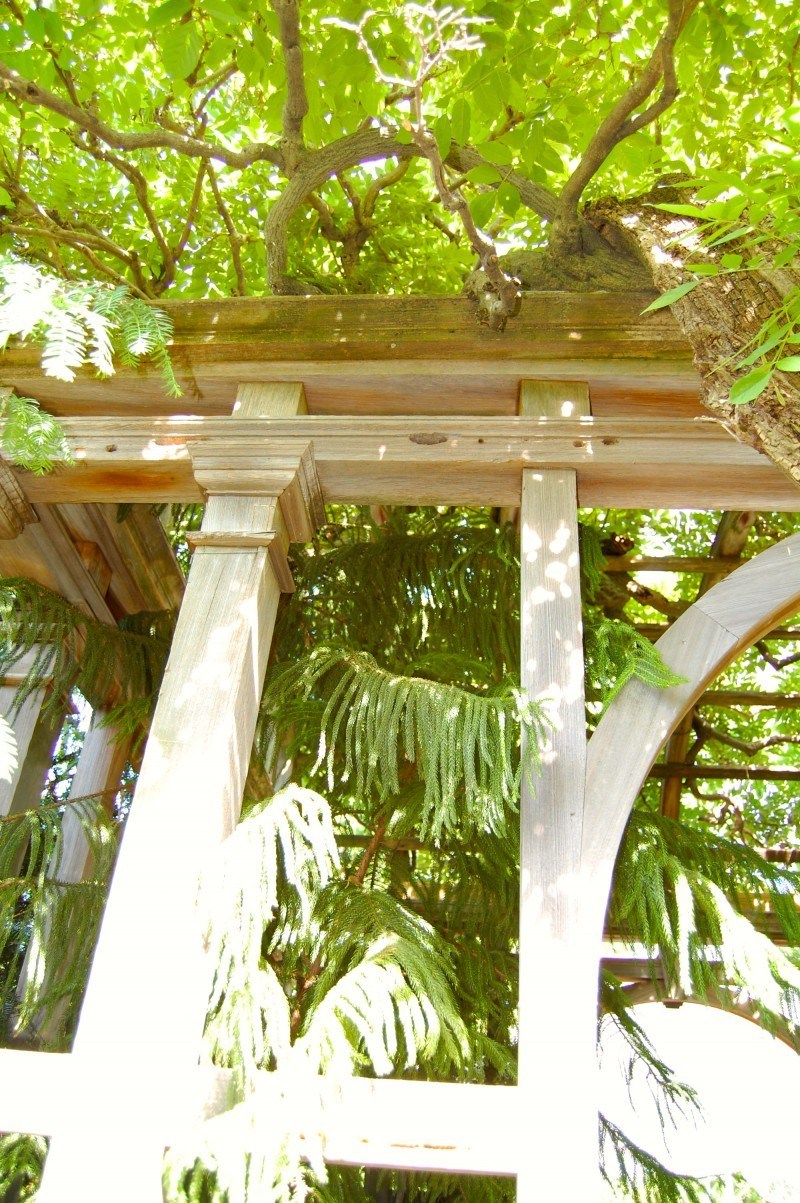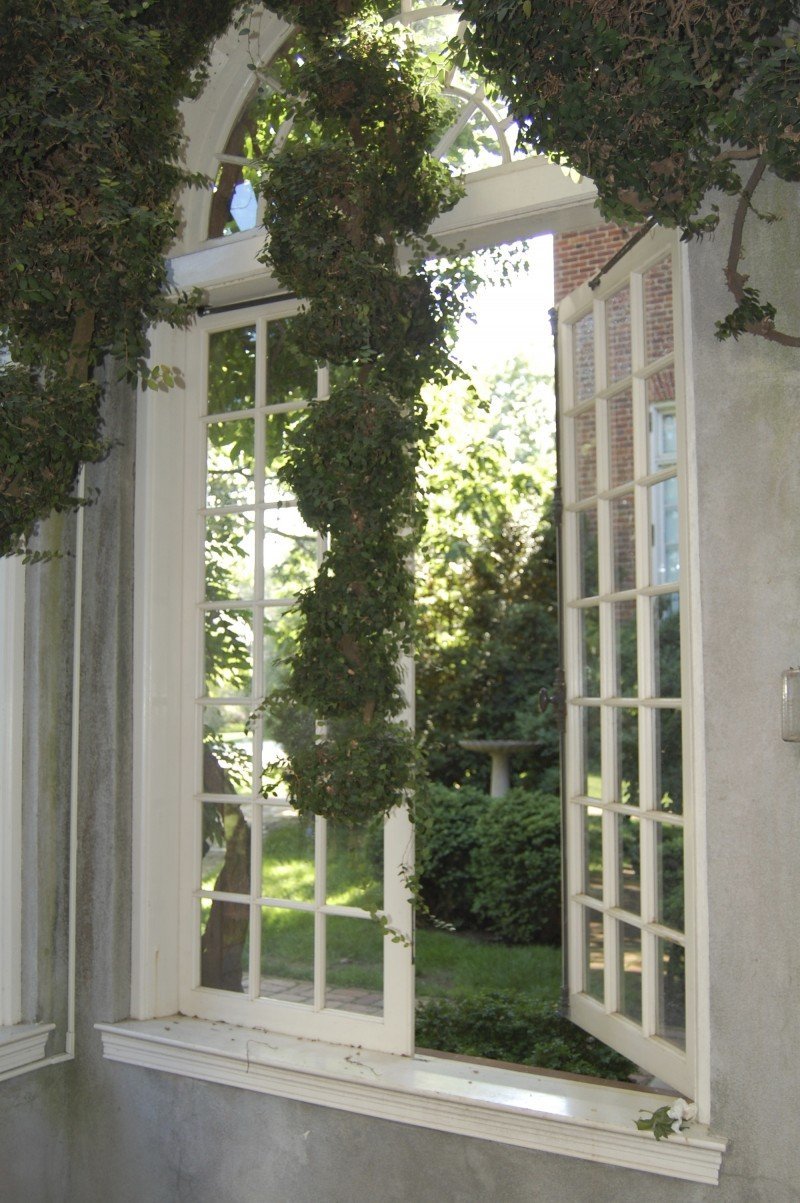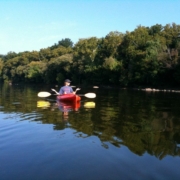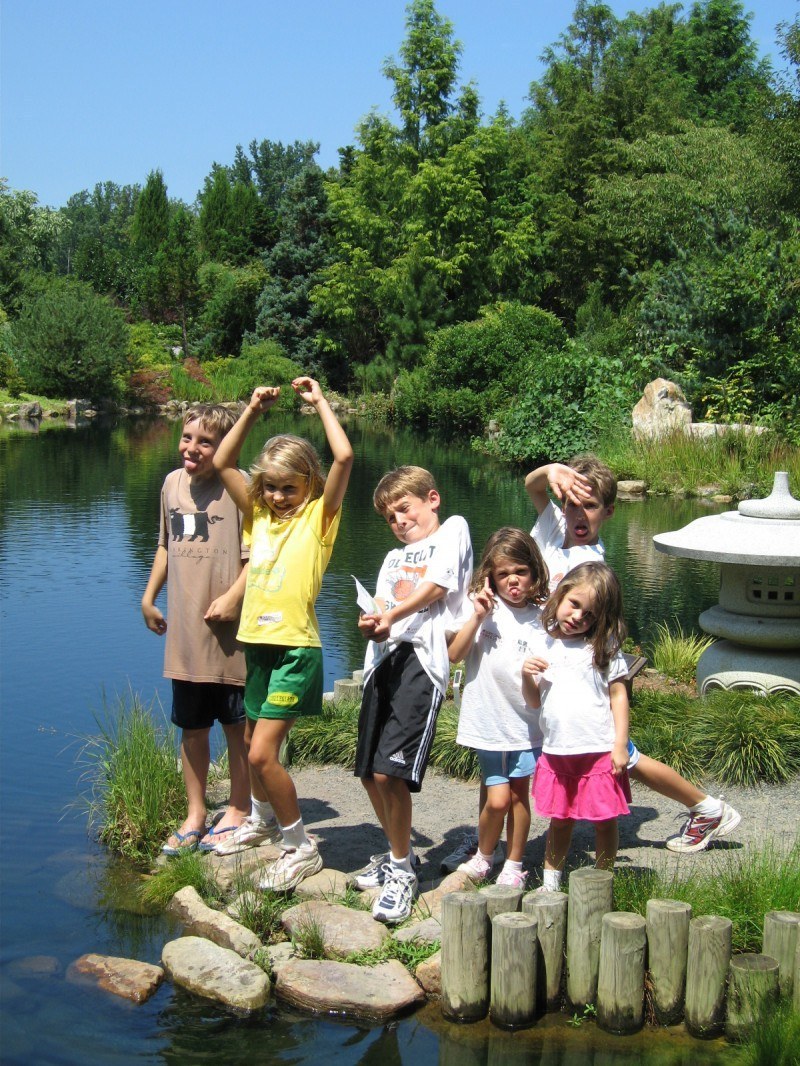
Cooling off on the rocks at Belle Isle
Richmond’s location at the fall line of the James River has put it on the map as a destination for those seeking the raw natural beauty of the river’s banks, rapids and trails. Retiring James River Park director Ralph White devoted his career to restoring the James and the parkland bordering it.

Anne Rusbuldt chilling on the James
Nathan Burrell, head of Richmond’s extensive trail system, has built on that success, spending years working with colleagues and volunteers to carve out miles and miles of trails on both banks of the river. Currently, he is spearheading a trail-building project on Chapel Island.
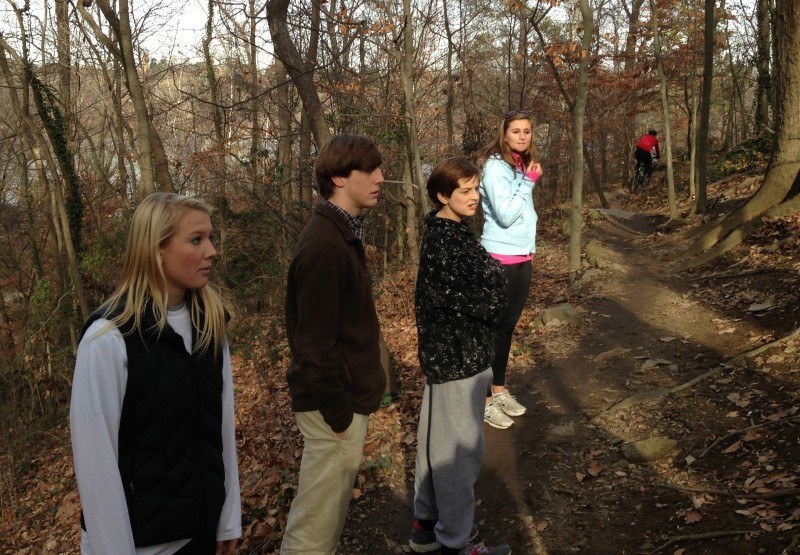
Anne Wallace Tazewell, Will Tazewell, Ford Turner and Amanda Johnson hiking the Buttermilk Trail
Richmond is also home to some grand and historic parks, including Byrd, Bryan and Monroe, and many smaller pocket parks and green spaces. Some public spaces, due to lack of funds, receive only the most basic maintenance. These spaces sit waiting to be restored to their former glory.
Capital Trees (a joint project of the Boxwood, James River, Three Chopt and Tuckahoe Garden Clubs) is partnering with the city to restore beautiful green spaces and increase a healthy tree canopy throughout Richmond.
Capital Trees’ first challenge was to turn a busy, concrete-choked block downtown into a lush green avenue that also collects and filters storm-water runoff.
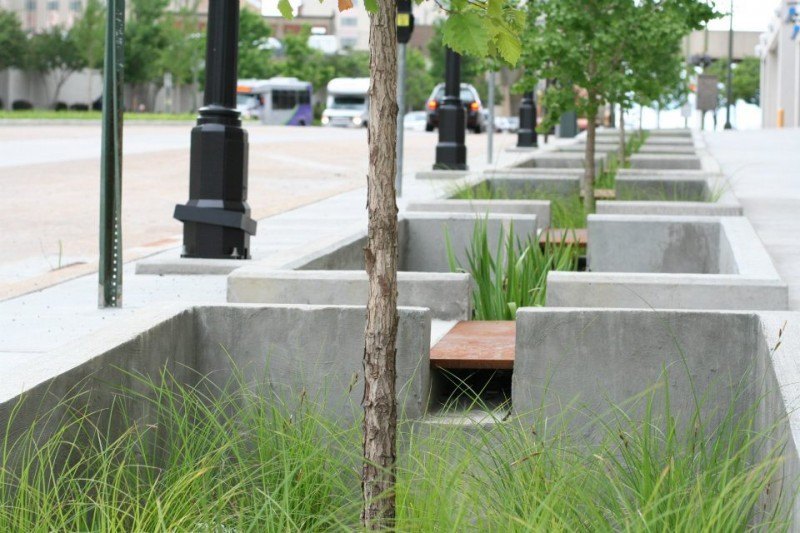
Ginkgos, Grasses and Irises grow in bio-retention wells on the east side of 14th Street
Designed by Capital Trees’ partners 3north (led by Jay Hugo) and Water Street Studio (led by Keith Whipple), the block of 14th Street between Bank and Main is planted with a triple allee of Ginkgos and Swamp White Oaks. On the east side of the street the trees, along with grasses and irises, are planted in engineered bio-filtration wells that capture and filter polluted storm-water.
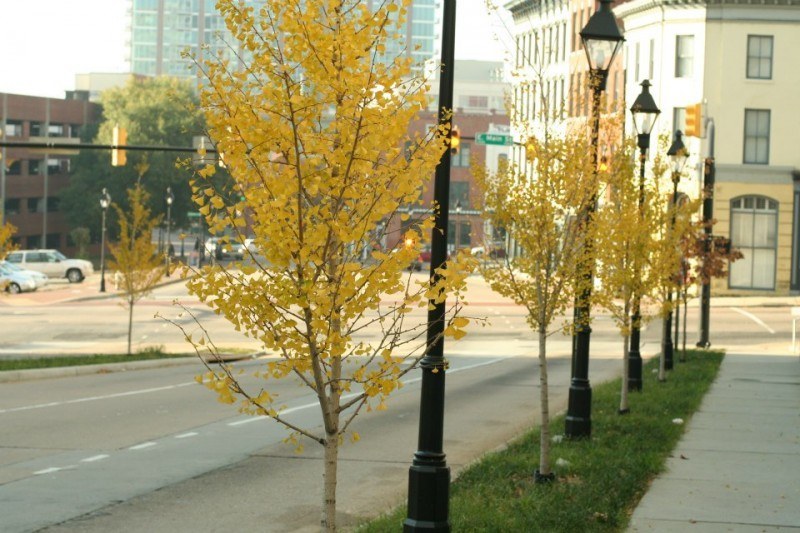
Ginkgos and Liriope grow on the west side of 14th Street
The 14th Street project was so successful, Capital Trees and the city have since partnered on several more projects. 3north is Capital Trees’ design partner, and Water Street Studio provides design and engineering assistance. These projects include:
Renovation of the RMA Plaza
Capital Trees, in partnership with the City and 3north, is renovating this dilapidated park (across from The James Center on Byrd Street), adding trees, rain gardens, seating and public gathering spaces.
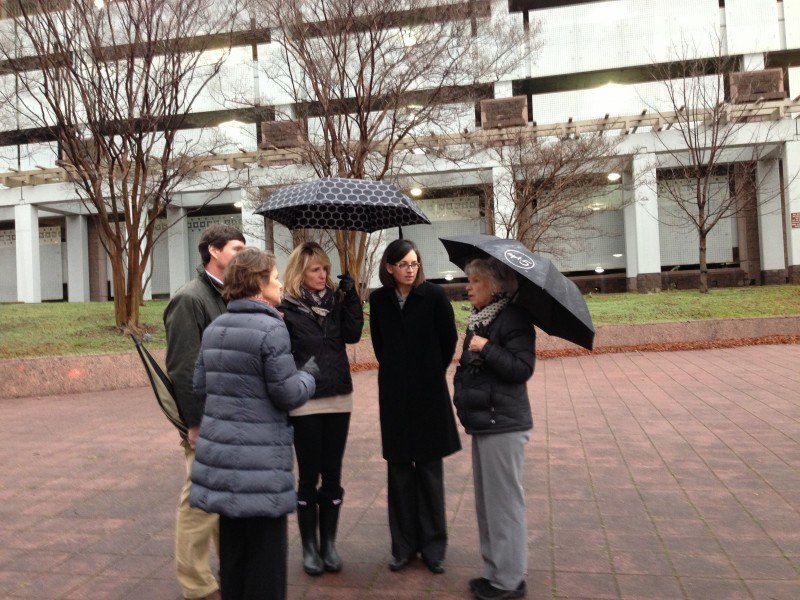
Lynden Miller encourages us to incorporate lush planting beds when building the new park at the RMA Plaza. Susan Robertson, Scott Ukrop, Melinda Hardy and Jill Nolt listen to Lynden’s suggestions.
The Jefferson Greenway
The proposed Greenway, following 10th Street south from the Capitol to the canal, is inspired by Jefferson’s original vision of a hilltop capitol, broadly facing the fall line of the James. The Greenway will provide a strong natural thread that will visually, symbolically, and physically reconnect Richmond’s Capitol Square with the James. The plan will include green spaces, trees and storm-water remediation. The Alliance for the Chesapeake Bay and Capital Trees are partnering to make the Greenway vision a reality.
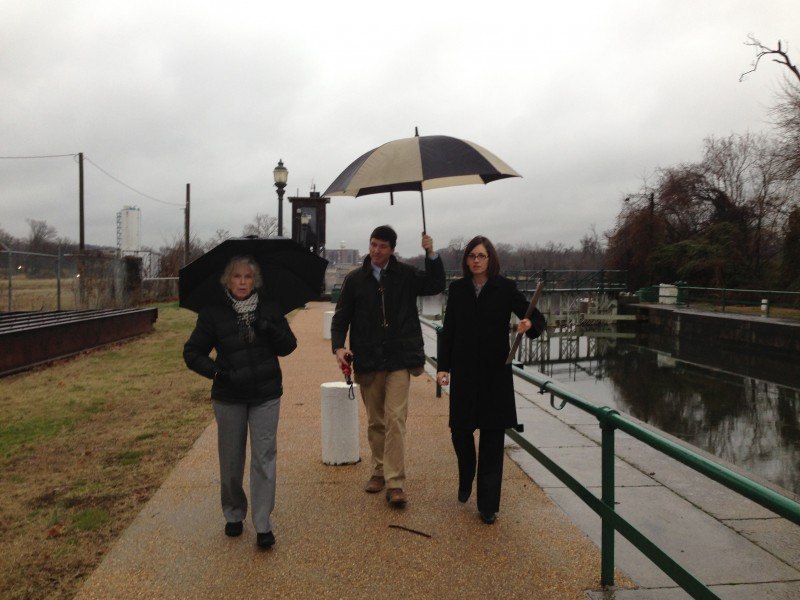
Jill Nolt and Scott Ukrop give Lynden a tour of Great Shiplock Park.
Great Shiplock Park
Great Shiplock Park is home to locks, dating to the 1850s, that carried ships into the canal at the east end of the falls of the James. The sleepy park is about to get a major facelift as the future site of the Virginia Capital Trail’s Eastern Trailhead. Beth Weisbrod, Executive Director of the Virginia Capital Trail Foundation, has brought together her foundation, the City, Capital Trees and other constituencies to go beyond the mandate of building a trailhead. Plans are in place to make the park into yet another beautiful public garden space where cyclists, hikers, kayakers, birdwatchers, runners and picnickers will come to soak in the park’s history and natural beauty. Landscape architect Jill Nolt (3north) has designed the space to be beautiful and functional, with shaded lawns and lush rain gardens to trap and filter storm-water.
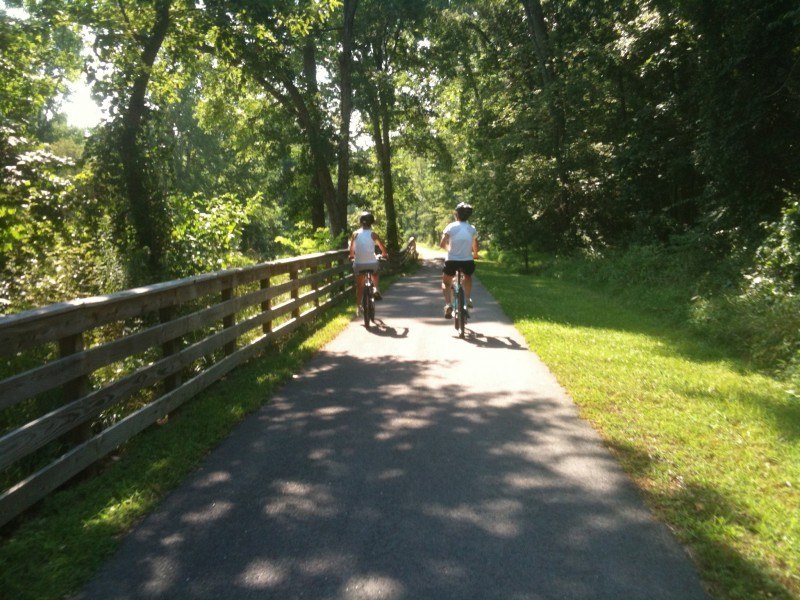
Riding the Virginia Capital Trail with friends
Seizing this momentum, Capital Trees (led by Jeanette McKittrick) and Lewis Ginter Botanical Garden (led by Frank Robinson) decided it was the perfect time to bring back the garden designer and advocate who inspired many in the community during a visit in 2008.
Lynden Miller, the woman who transformed Central Park’s Conservatory Garden and Bryant Park, among many other public spaces in New York and beyond, swept into Richmond last week and succeeded in bringing together our city, corporate, foundation, civic, horticultural and design leaders — people who care about the quality of life in Richmond. She called on us to “create and support well-planted parks and gardens as essential urban oases that reduce crime and have positive effects on the economic welfare of Richmonders.” She spent a cold rainy day touring the Capital Trees projects (see pictures above), gave an inspiring talk to the Richmond garden clubs and another rousing presentation to a group at the botanical garden, advised Bon Secours on healing gardens and conducted a workshop for community leaders.
Scott Ukrop and Jill Nolt from 3north, in conjunction with Randee Humphrey from Lewis Ginter and Jeanette McKittrick from Capital Trees, organized the workshop, and it looks to be a pivotal moment in Richmond’s movement toward reclaiming its public spaces. They brought together a group of creative thought and design leaders to discuss opportunities and challenges we face in transforming our city. Using two of the Capital Trees projects and Monroe Park as case studies, folks bounced ideas off each other, received invaluable advice from Lynden (see some of her design principles below), and left the meeting with a sense that this city’s businesses, residents and municipal leaders are ready to shake up the status quo and nurture the budding green renaissance.

Lynden says, “make it gorgeous and they will come. Keep it that way and they will help.”
Lynden challenged us to harness the meeting’s energy and continue to collaborate to reach our potential. She “demonstrated the power of plants to soften and civilize public life, and showed how beautiful public spaces, planted and maintained to high standards, have the power to transform the way people behave and feel about their cities.” Parks, Plants, and People, by Lynden B. Miller. I think we’re up to the challenge.
A FEW FUNDAMENTAL GARDEN PRINCIPLES
Here are some of Lynden’s principles of garden design that can be applied to public gardens as well as your own private patch of earth. I’ve thrown in a few of my own guiding principles as well:
PLANT TREES TO CREATE A CANOPY, SHADOW AND SHADE
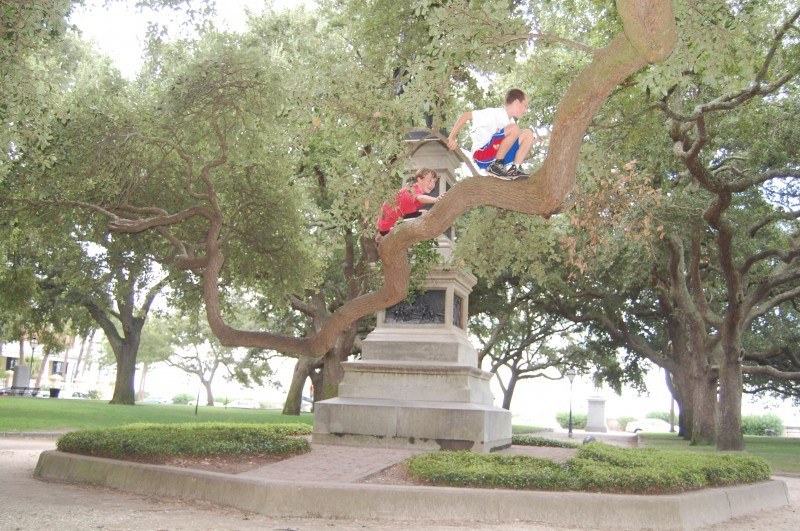
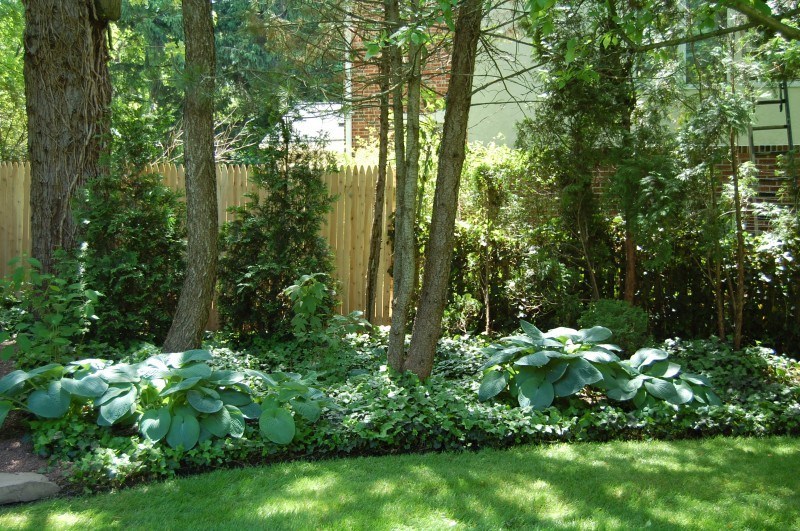
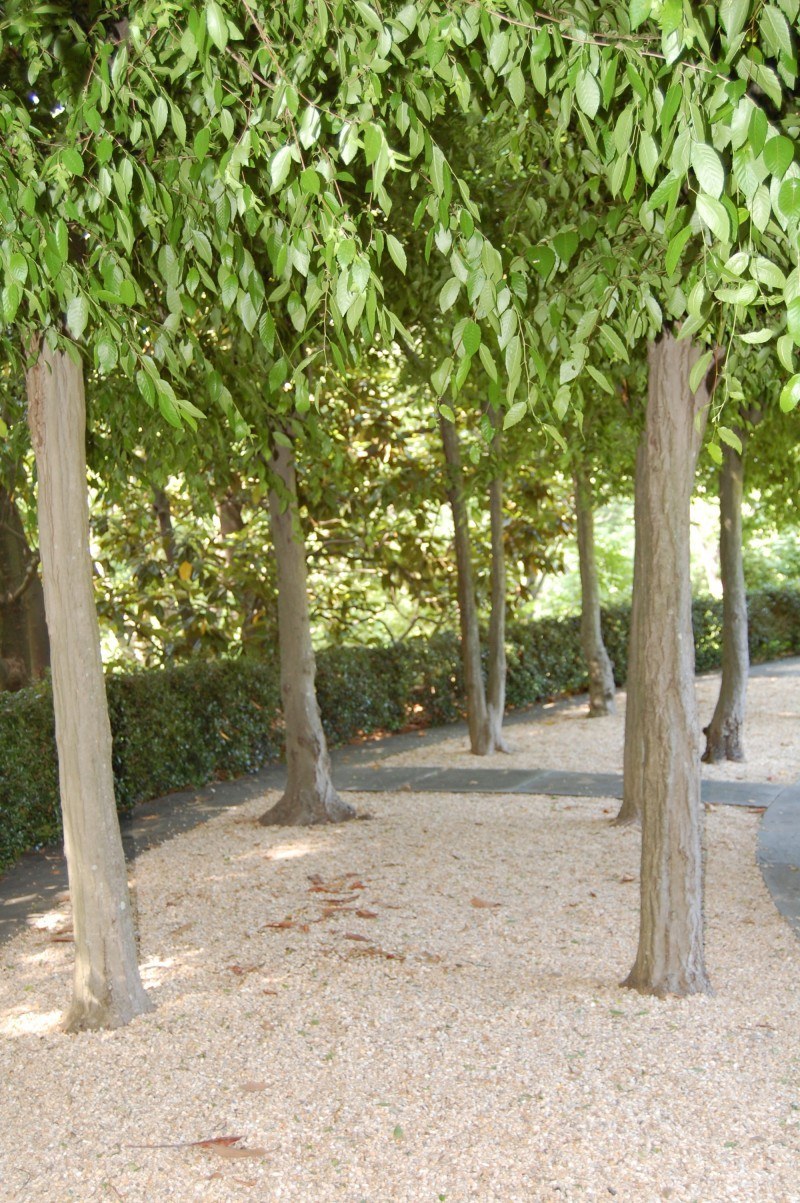
CREATE A BEAUTIFUL PLANT PALETTE
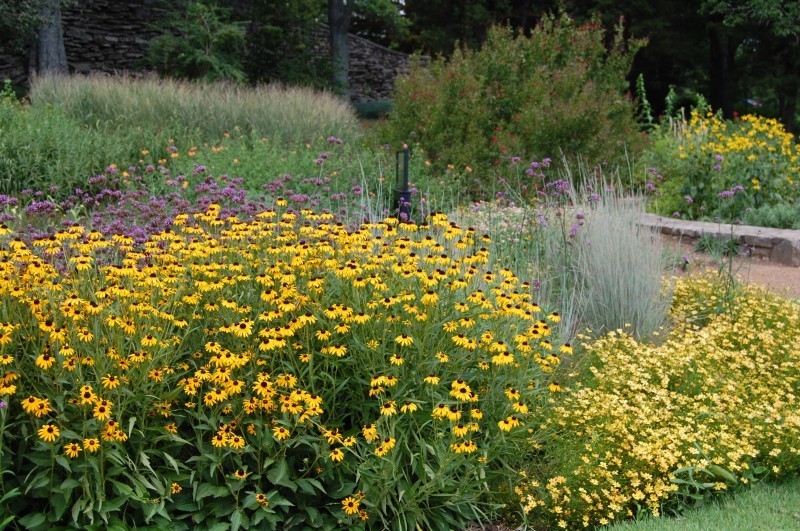
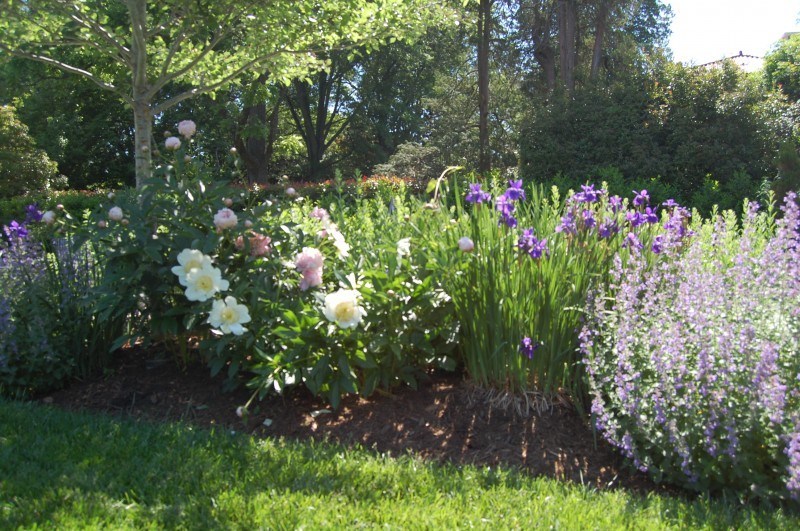
INCORPORATE PLENTY OF SEATING
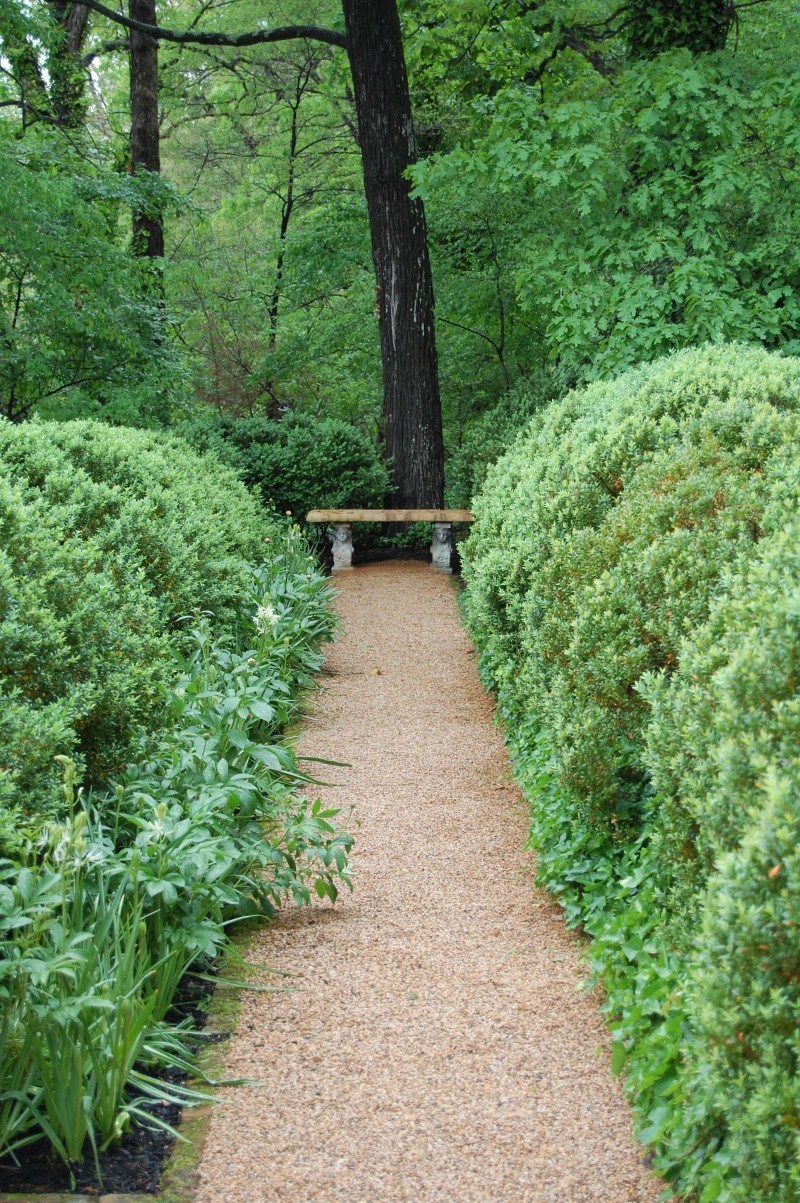
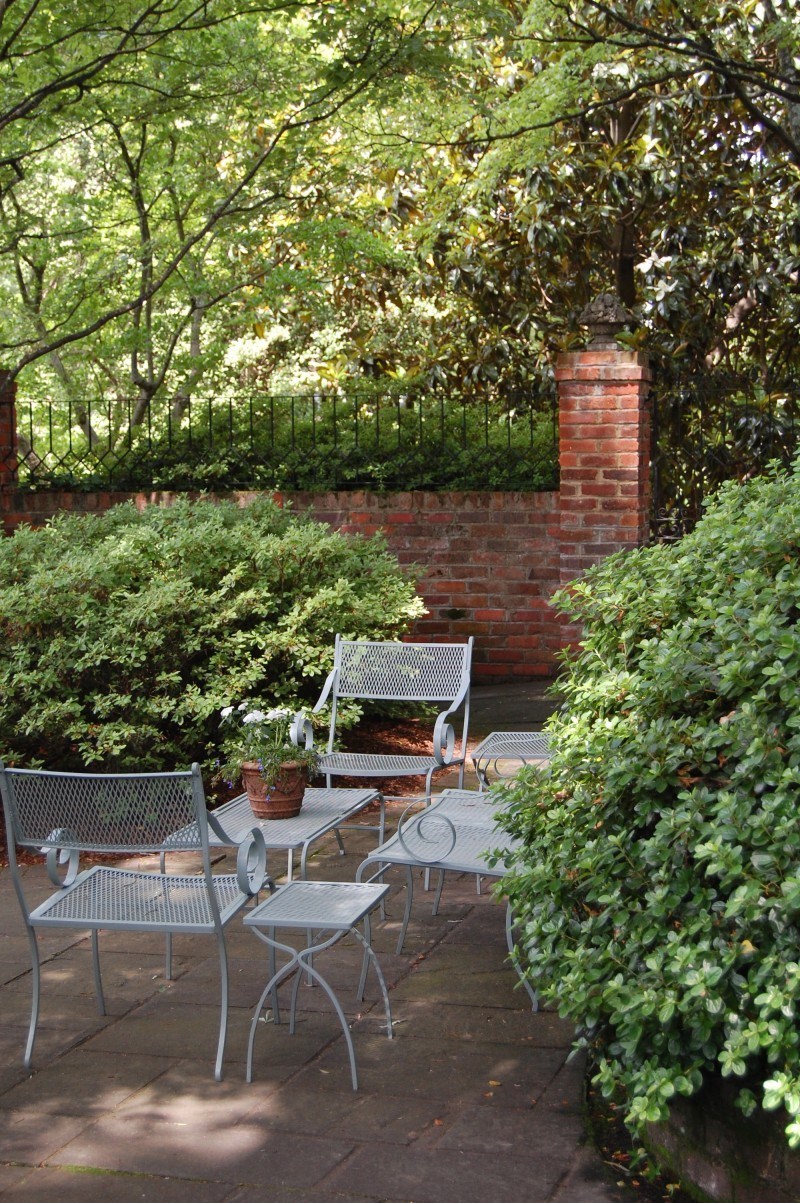
BREAK UP HARDSCAPE WITH PLANTS
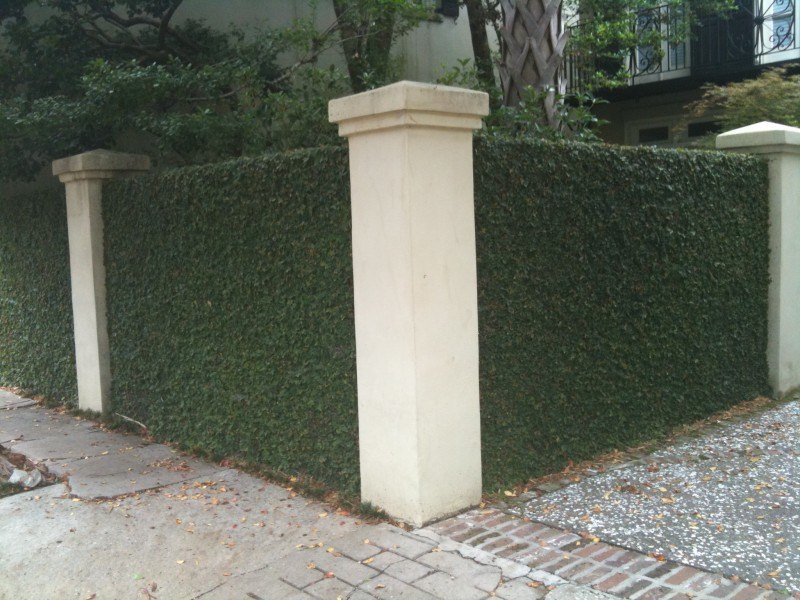
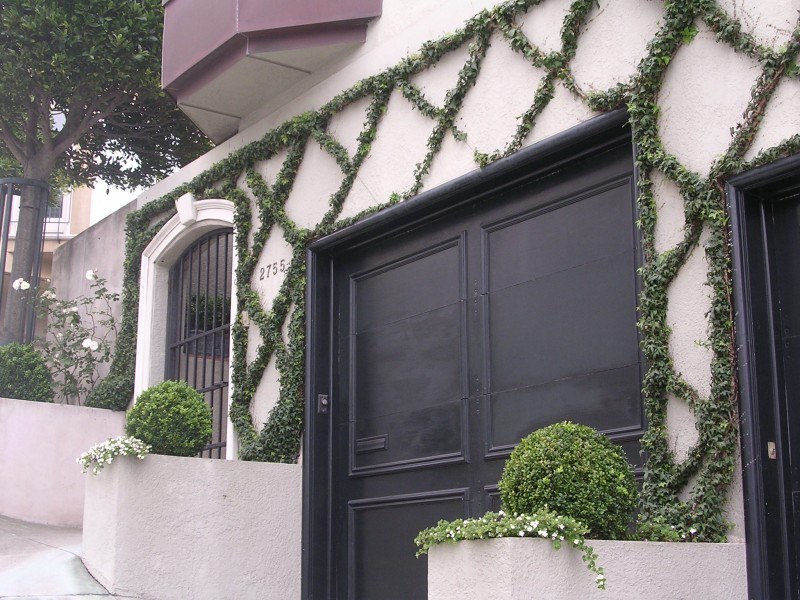
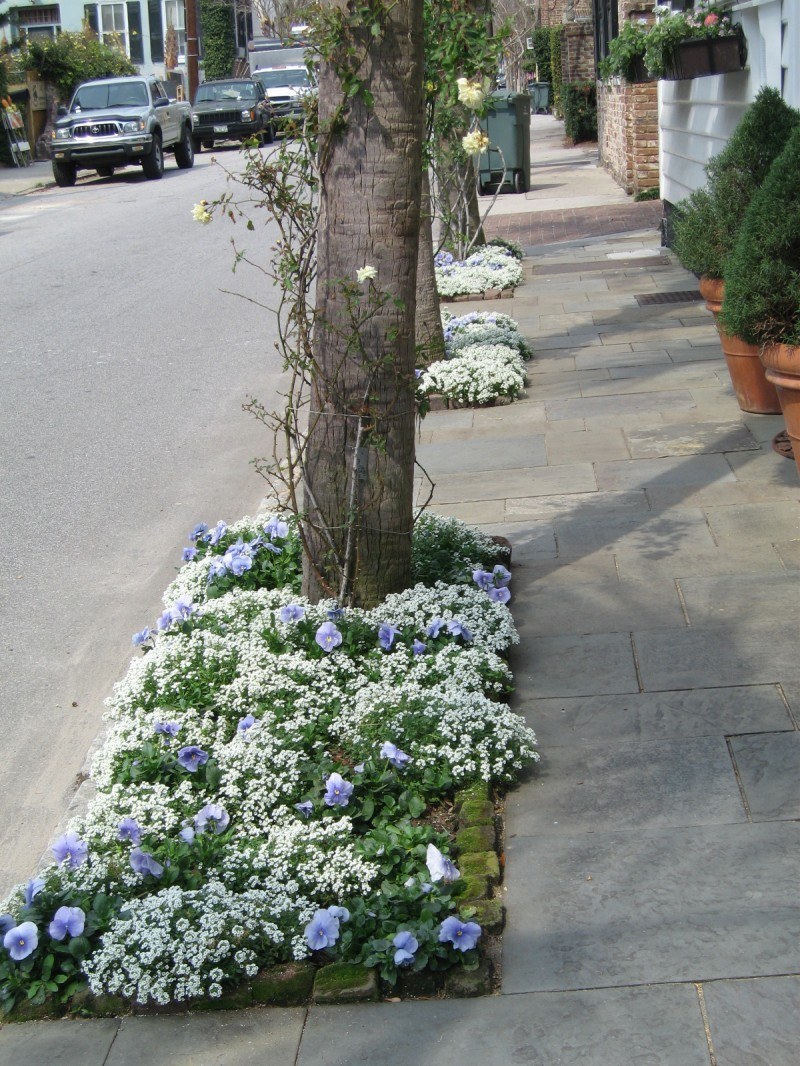
A GARDEN IS A WONDERFUL BACKDROP FOR ART
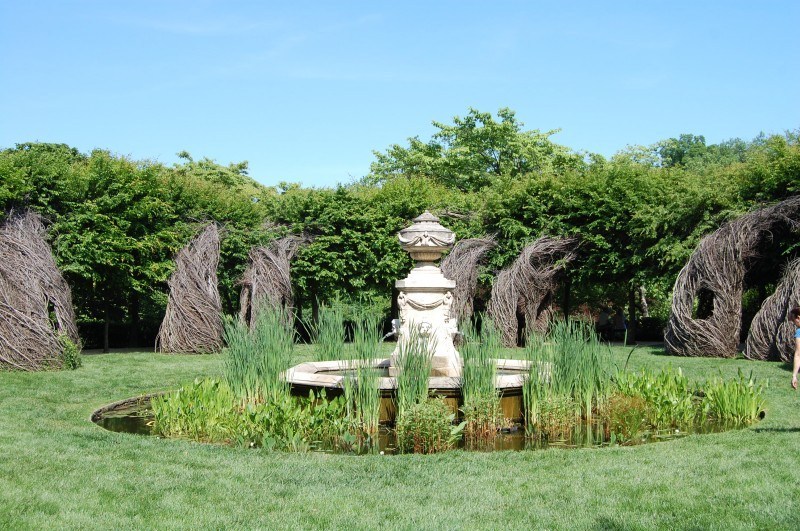
PROVIDE LAWN FOR RECREATION AND NAPS
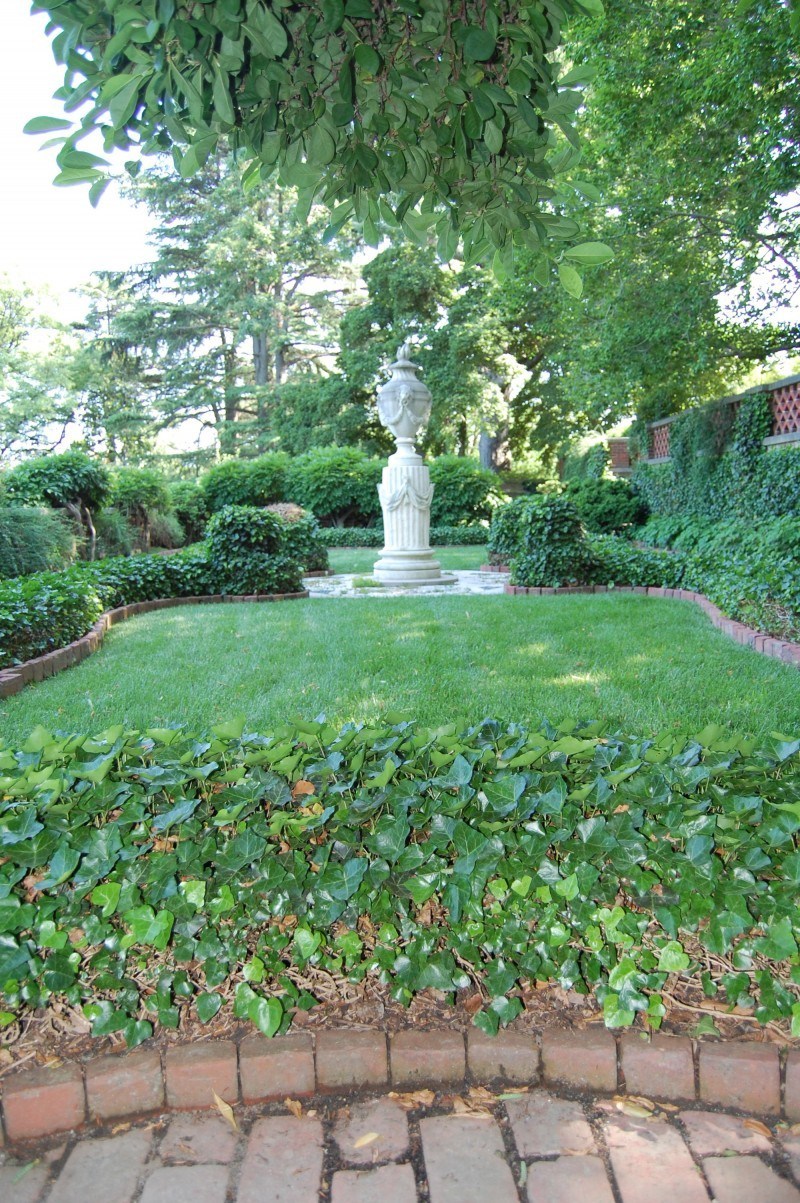
DON’T FORGET PATHS AND WALKWAYS
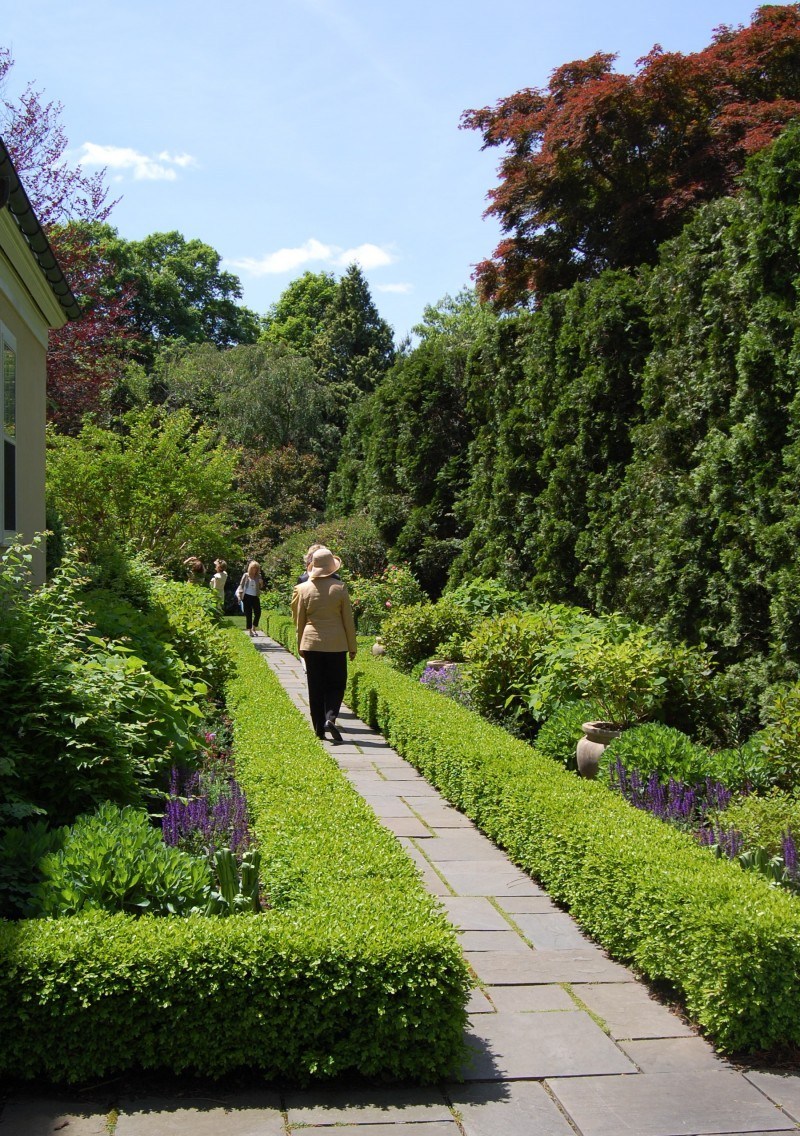
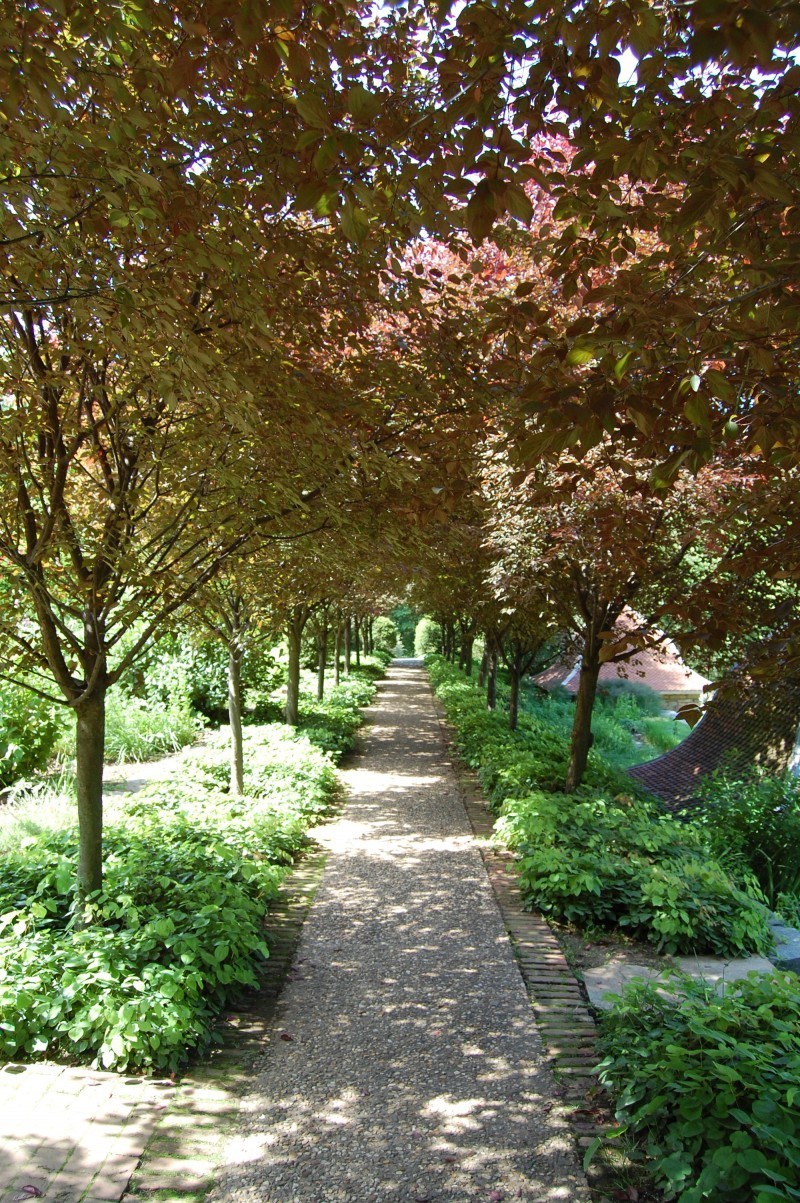
GOOD BONES AND INTERESTING ARCHITECTURE WILL ENSURE THE GARDEN ENDURES
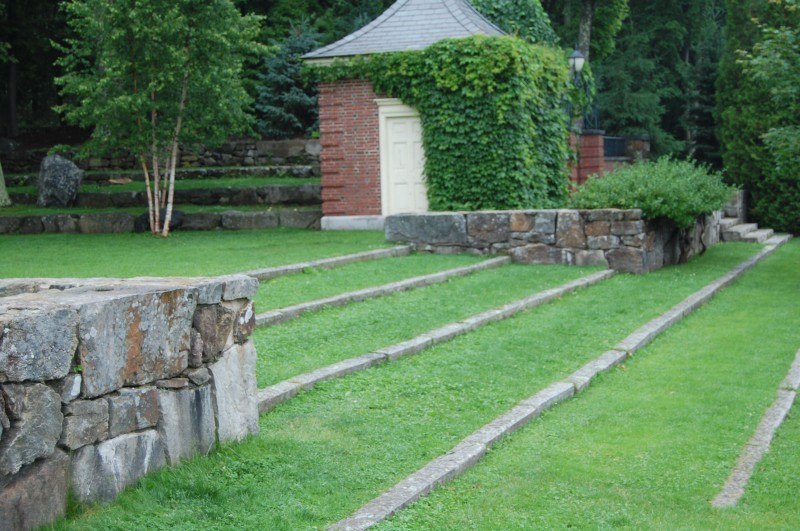
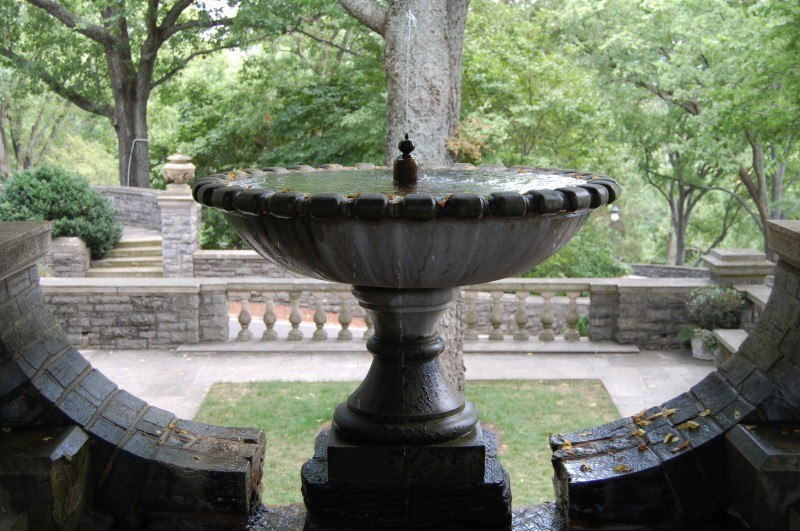
SKILLED AND REGULAR MAINTENANCE ARE A MUST
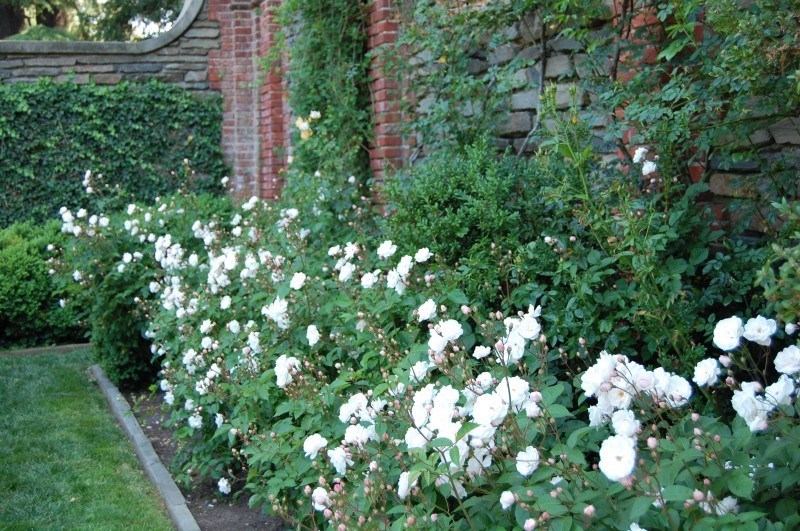
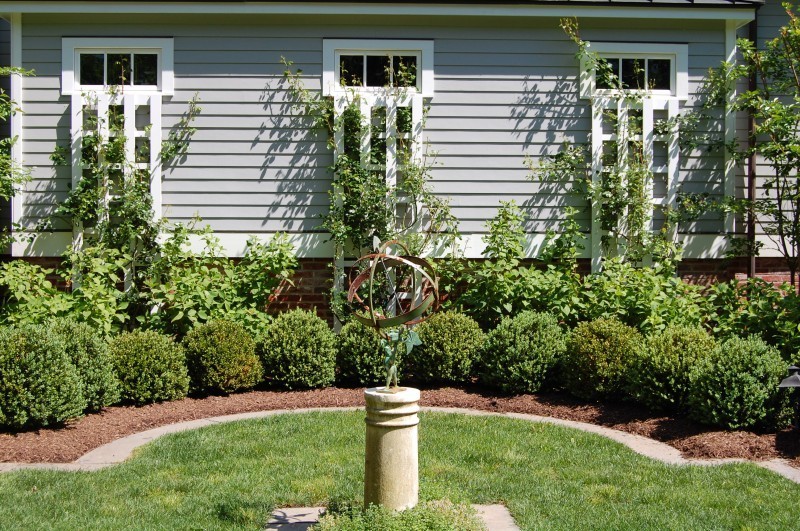
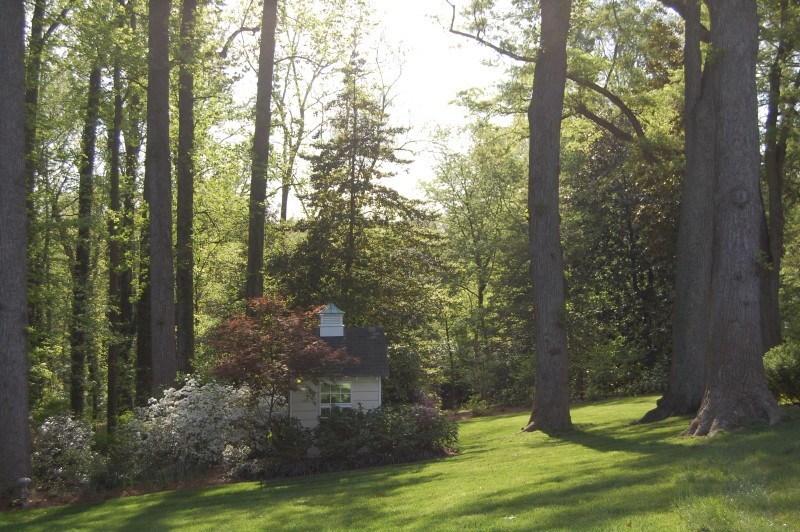 The sun casts long shadows across the sloping lawn.
The sun casts long shadows across the sloping lawn.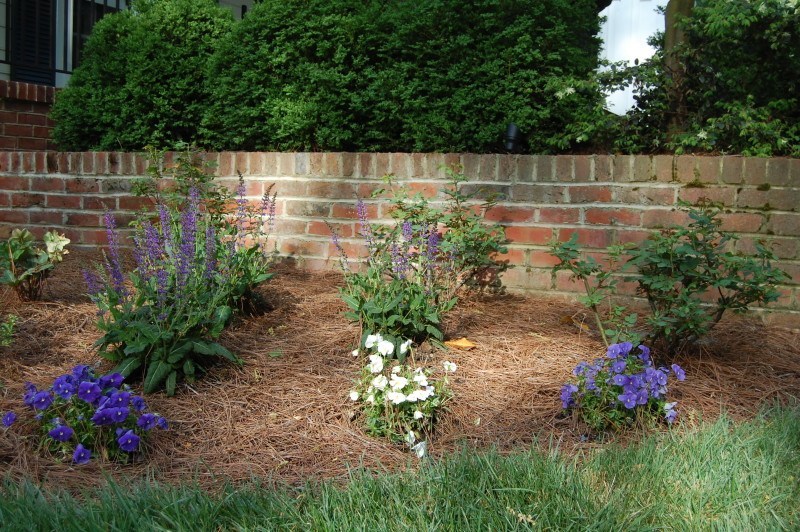 The deer love the Robertsons’ yard. Most of the plants in their garden are deer resistant, but Susan can’t help planting a few beloved plants that are tasty to the deer. She is my go-to girl on the latest deer deterrents. She’s tried them all.
The deer love the Robertsons’ yard. Most of the plants in their garden are deer resistant, but Susan can’t help planting a few beloved plants that are tasty to the deer. She is my go-to girl on the latest deer deterrents. She’s tried them all.
